Glimpses of the Farm
/Slowly by surely I am trying to get organized with Lightroom, my new photo software. Does learning new software count up there as a stressor along with changing jobs, spouses, or health issues? Here are some random photos taken over the last month while doing chores.
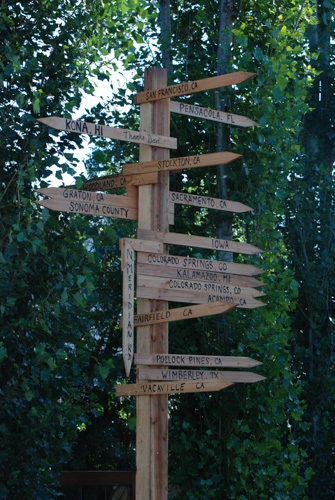
Our new signpost on the way to the barn, in case visitors are unsure of where they are. Not really. It is on the way to the barn but was constructed by my husband for the memorial service we had here for his dad. Our birthplaces are at the top, followed by parents', siblings', and our kids' birthplaces or current locations.
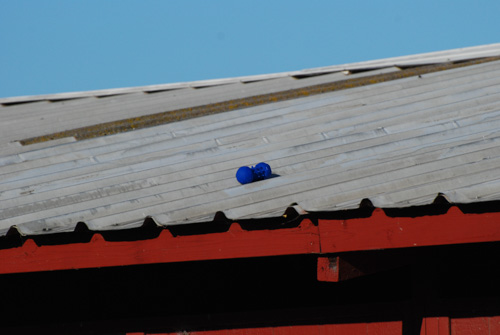
Speaking of the barn I call this Dog Toy on the Roof.
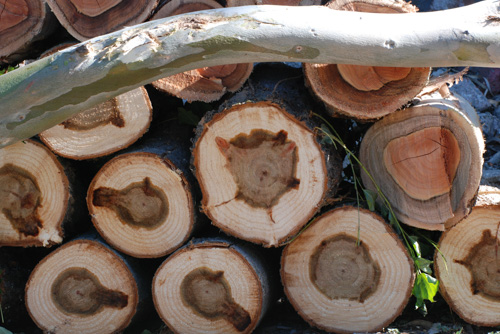
Wood from a tree my son took down for us.
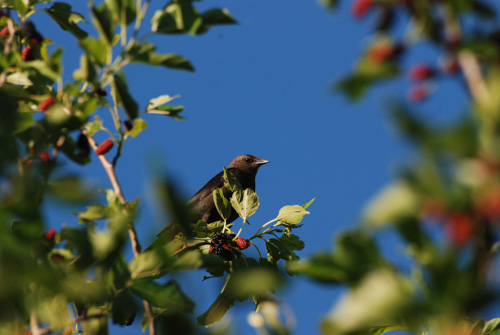
Brewer's Blackbird feasting on mulberries.
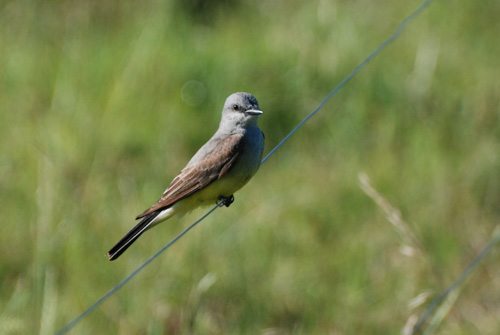
I think I got this ID right--Western Kingbird.
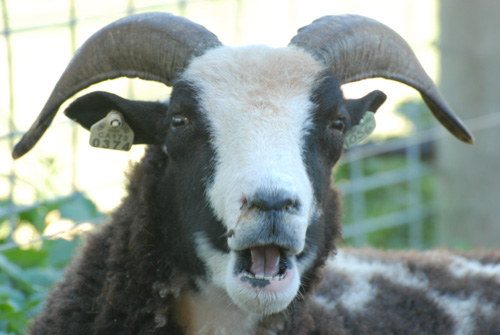
This is Hot Lips making an announcement.
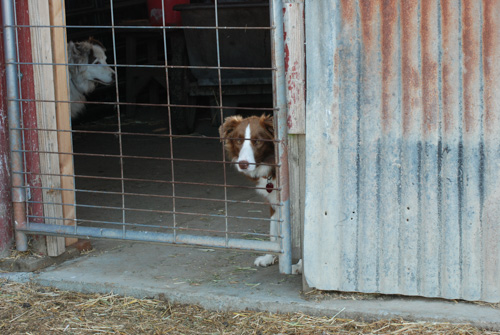
Ginny hoping to be called into service.
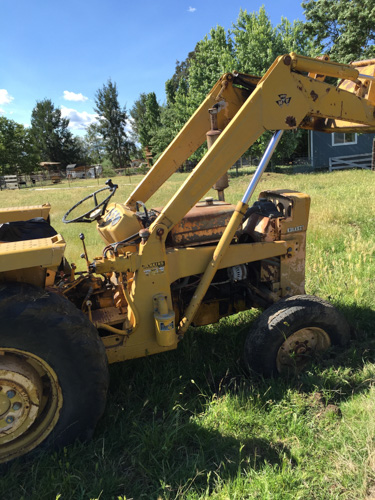
Did I mention when I got the tractor stuck? This is a dry field, or it's supposed to be. There must be a leak in a pipe and this corner is sopping weight. I was mowing foxtails and made a tight turn to do a thorough mowing job as far into the corner as I could.
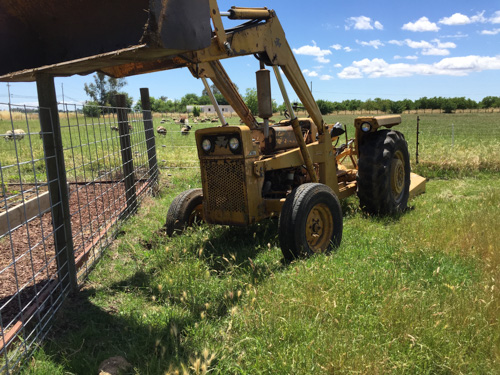
Do you see that the mower on the back of the tractor is right up at the fence on one side and the bucket is resting on a fencepost. There is no way to maneuver this thing out.
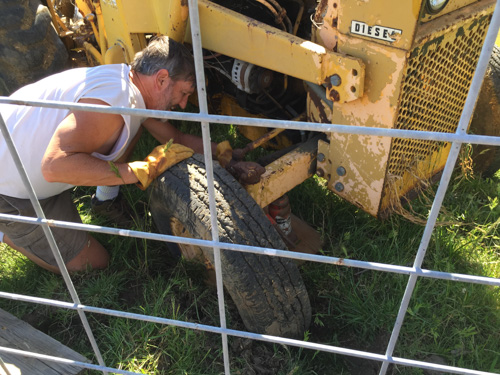
Dan spent about an hour jacking and digging...
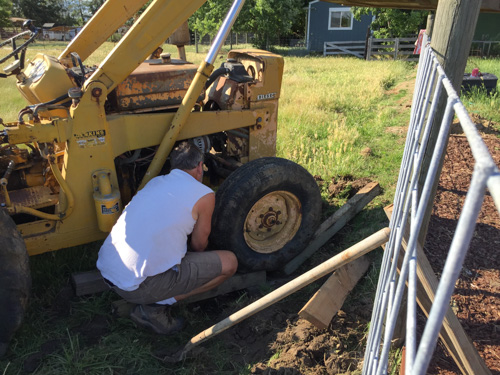
...and jacking and digging, each time trying to wedge another board under. Every time he'd remove the jack to wedge in another board the weight of the tractor rested on the fence post which creaked ominously. The boards that the jack was on kept squishing down in the mud, but eventually he got the wheel up to almost ground level. Still, there was no way to drive the tractor out without some help.
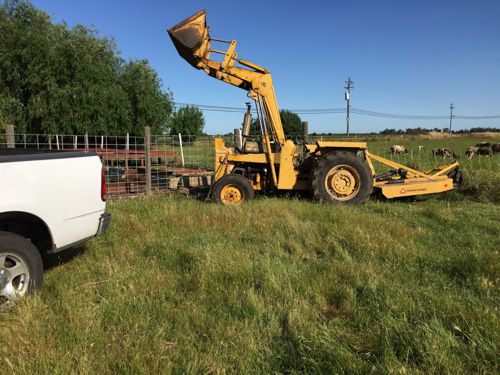
My 2-wheel drive pick-up was called into service and Dan chained it to the tractor. When he put the tractor in gear the truck gave just enough assistance, pulling sideways, so that the tractor wheel got out of the hole and onto dry ground.
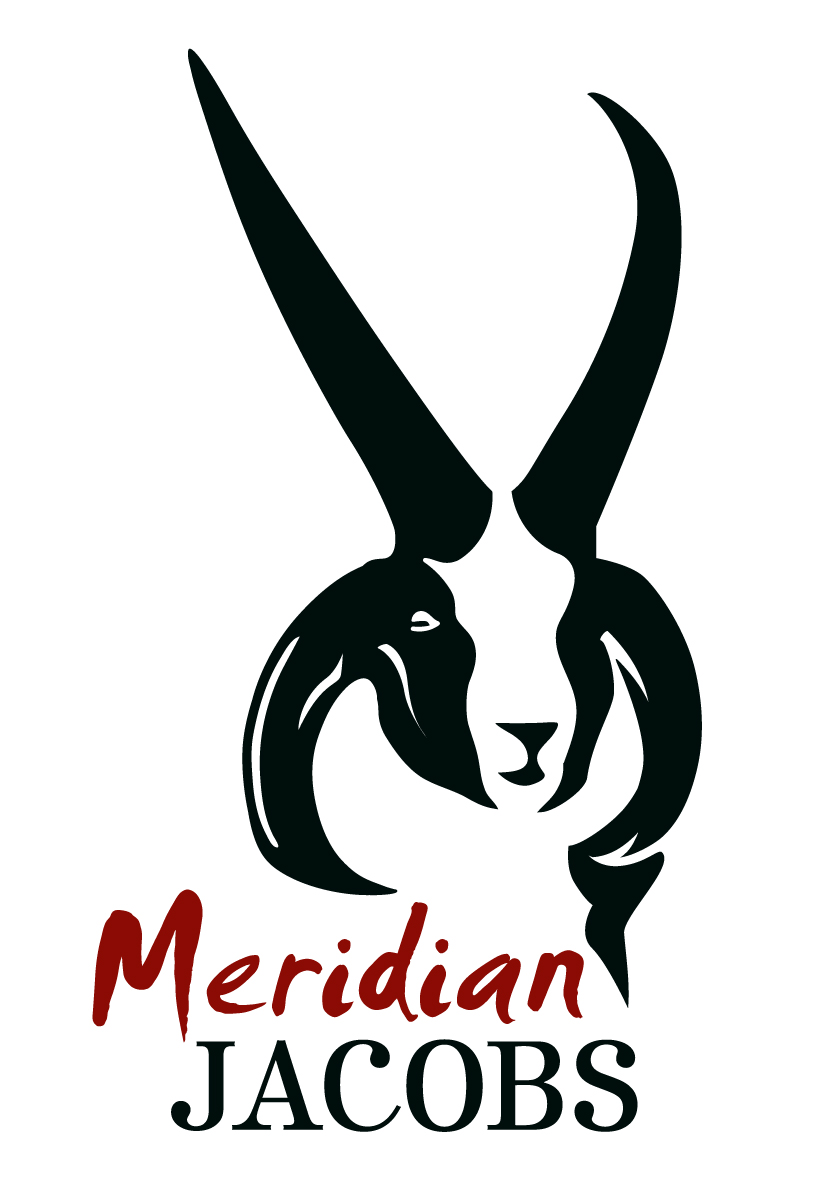
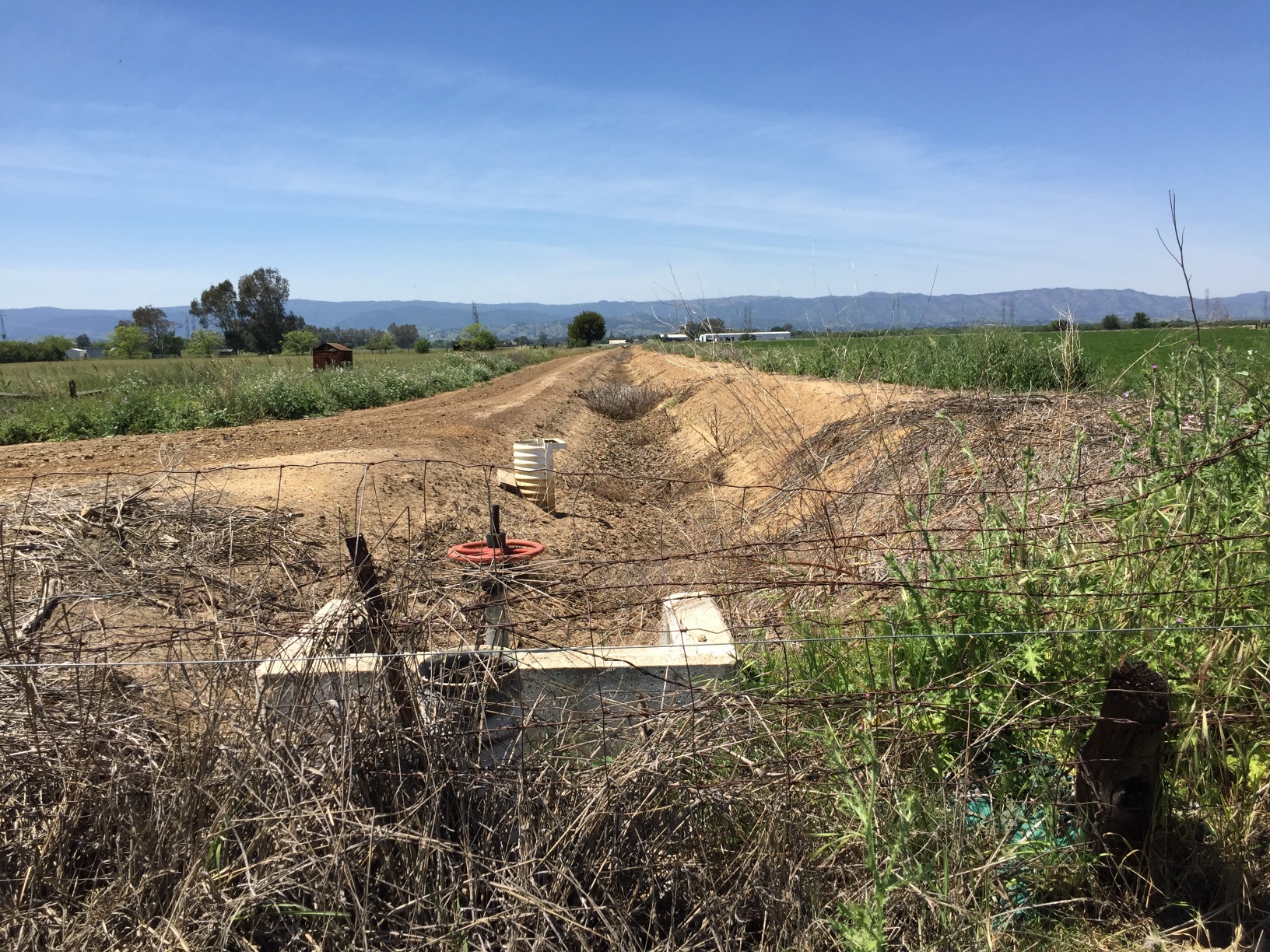 This was taken from standing in the northwest corner of the property and looking west. When SID (Solano Irrigation District) opens the right gate the water comes down that canal, through a gate in the cement structure at the bottom of the photo and...
This was taken from standing in the northwest corner of the property and looking west. When SID (Solano Irrigation District) opens the right gate the water comes down that canal, through a gate in the cement structure at the bottom of the photo and...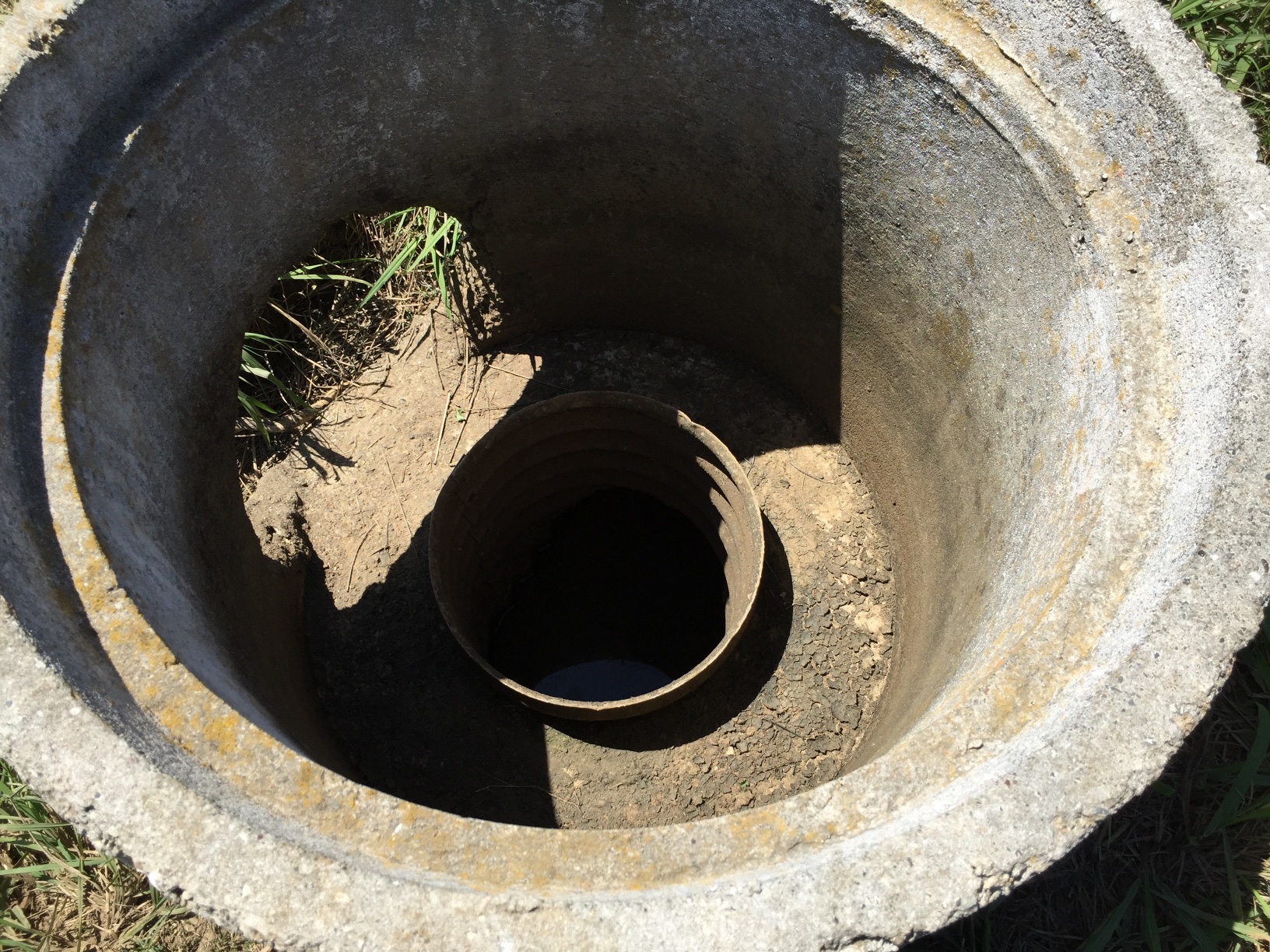 ...comes up through this standpipe. It goes out that hole on the left and...
...comes up through this standpipe. It goes out that hole on the left and...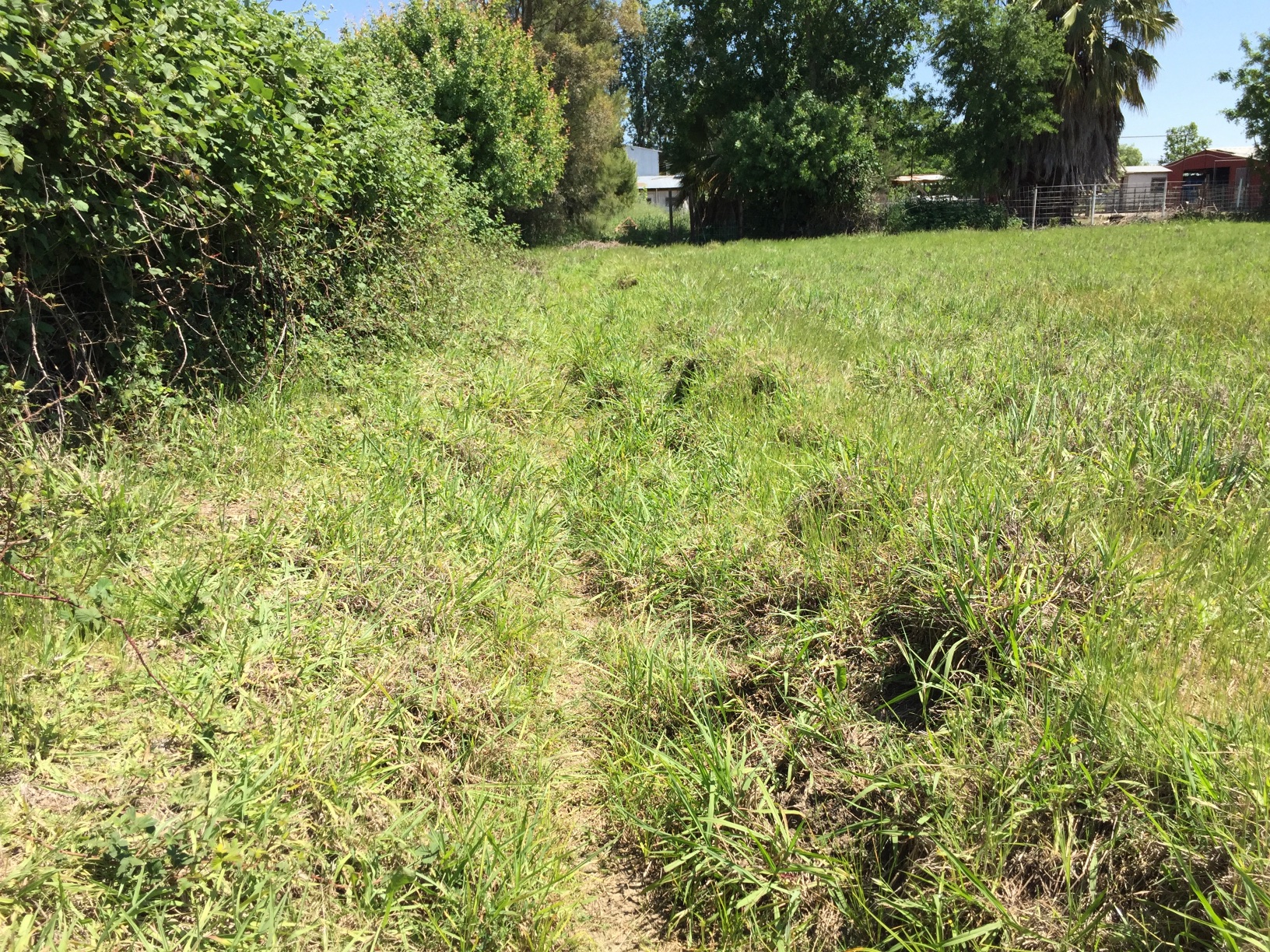 into this ditch. At the end of the ditch it turns south and goes into the other part of the pasture. Later in the year this ditch will require weed-wacking for the whole length to allow the water to flow. This time I didn't need to do that.
into this ditch. At the end of the ditch it turns south and goes into the other part of the pasture. Later in the year this ditch will require weed-wacking for the whole length to allow the water to flow. This time I didn't need to do that.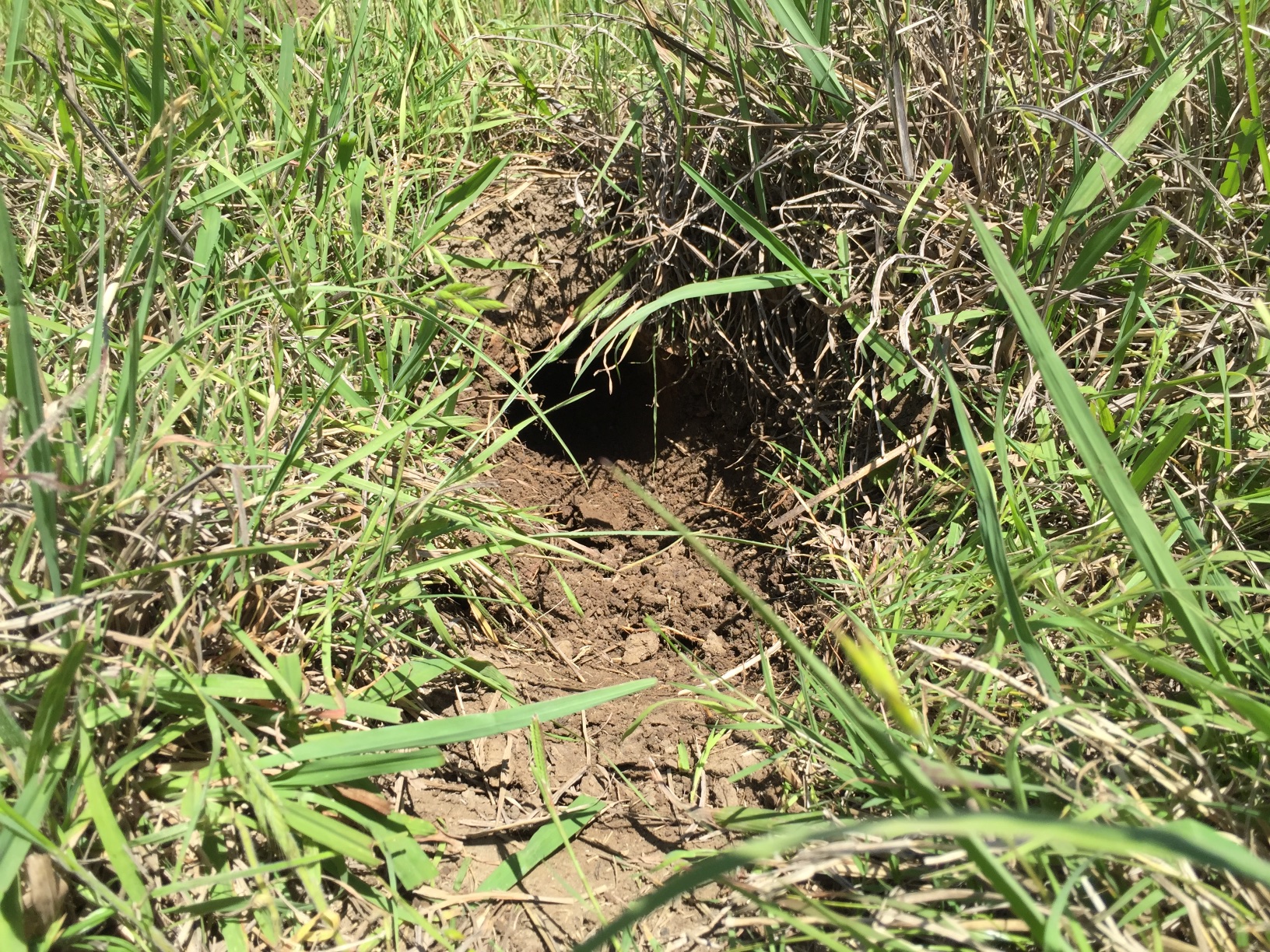 This part of the ditch has old pipes that take the water under the burm. I can find two of the three that used to be functional.
This part of the ditch has old pipes that take the water under the burm. I can find two of the three that used to be functional.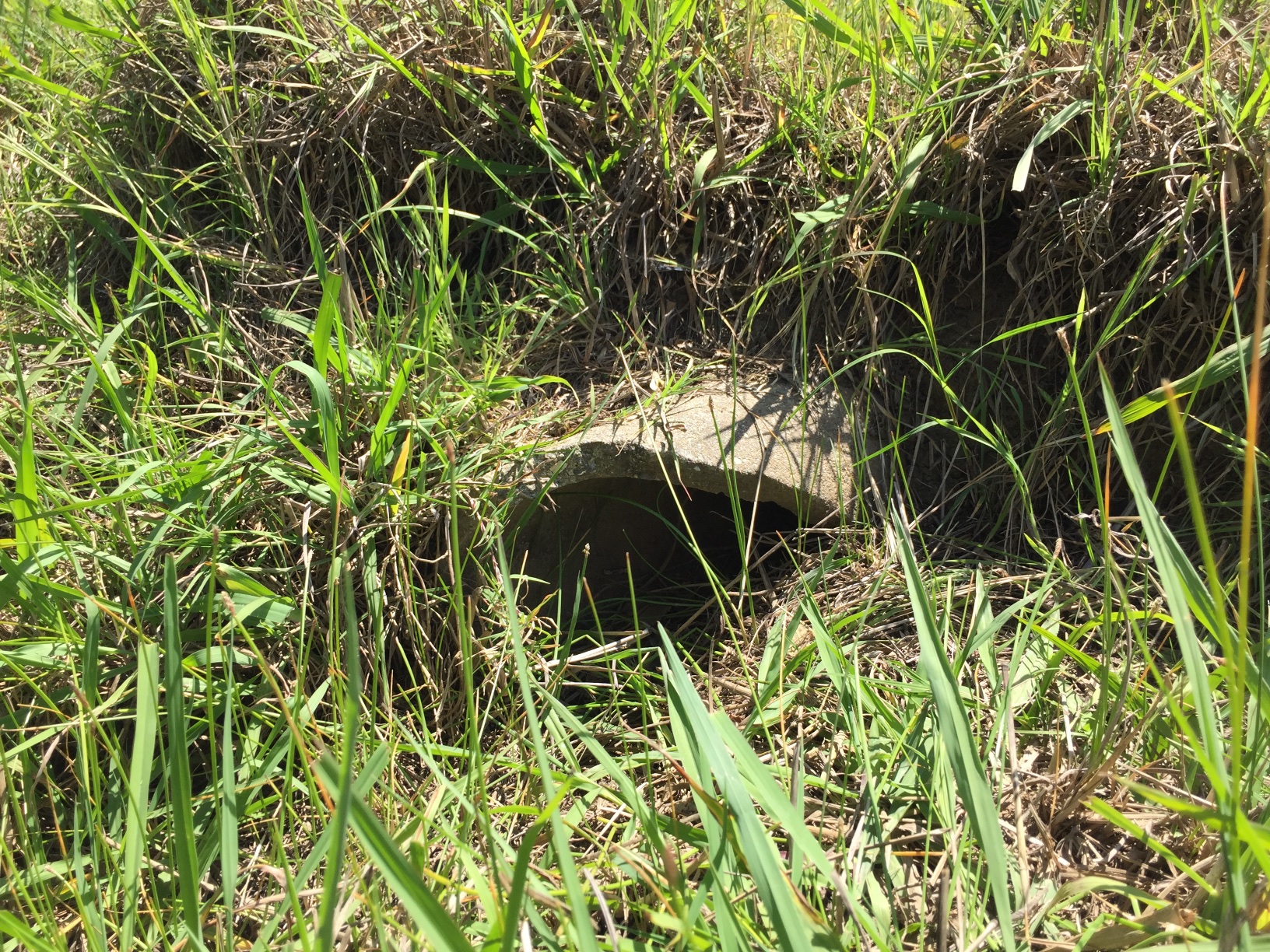 The first job is to dig out around both ends of these.
The first job is to dig out around both ends of these.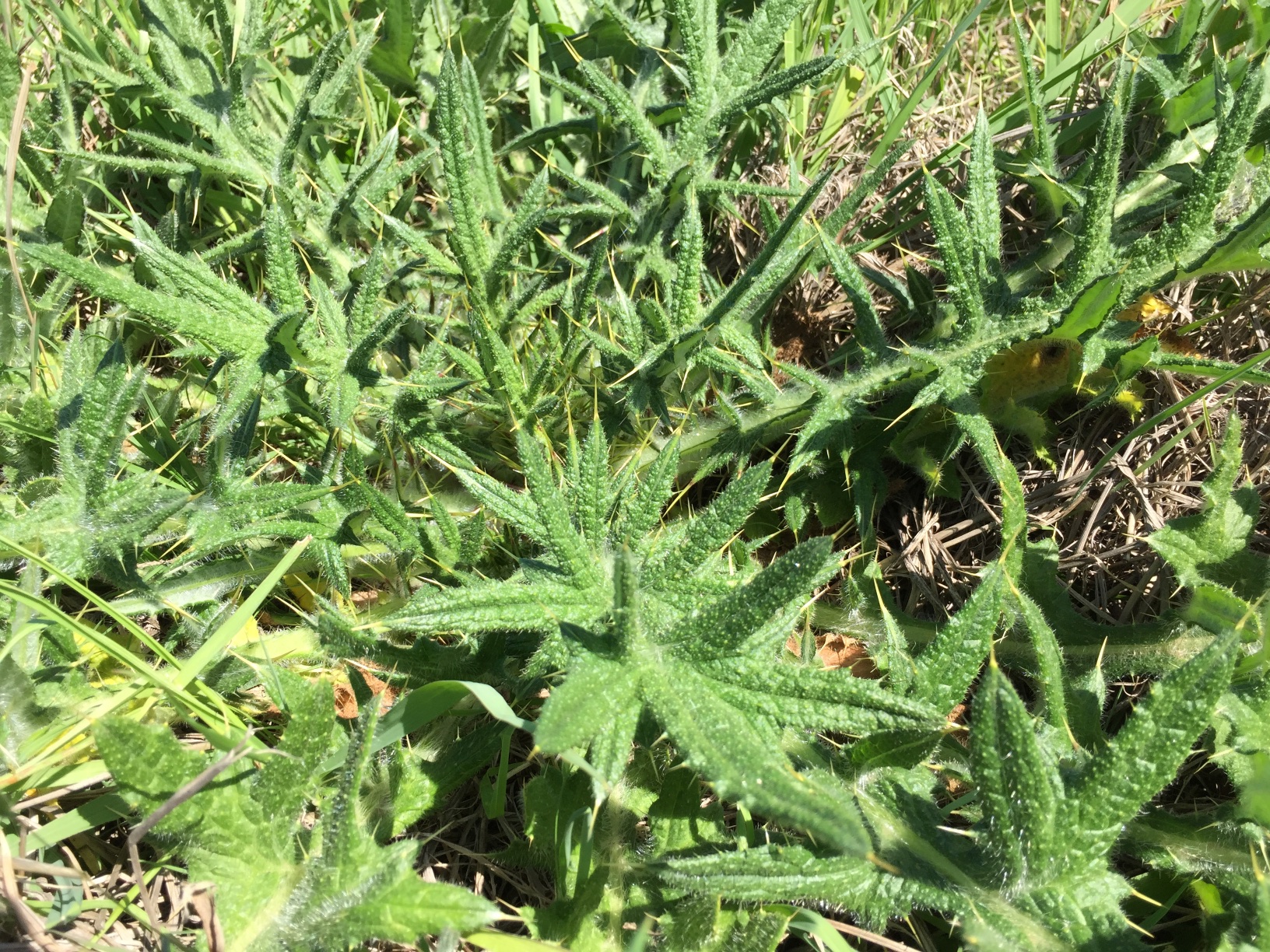 As I walk through the pasture I find thistles that need to be chopped.
As I walk through the pasture I find thistles that need to be chopped.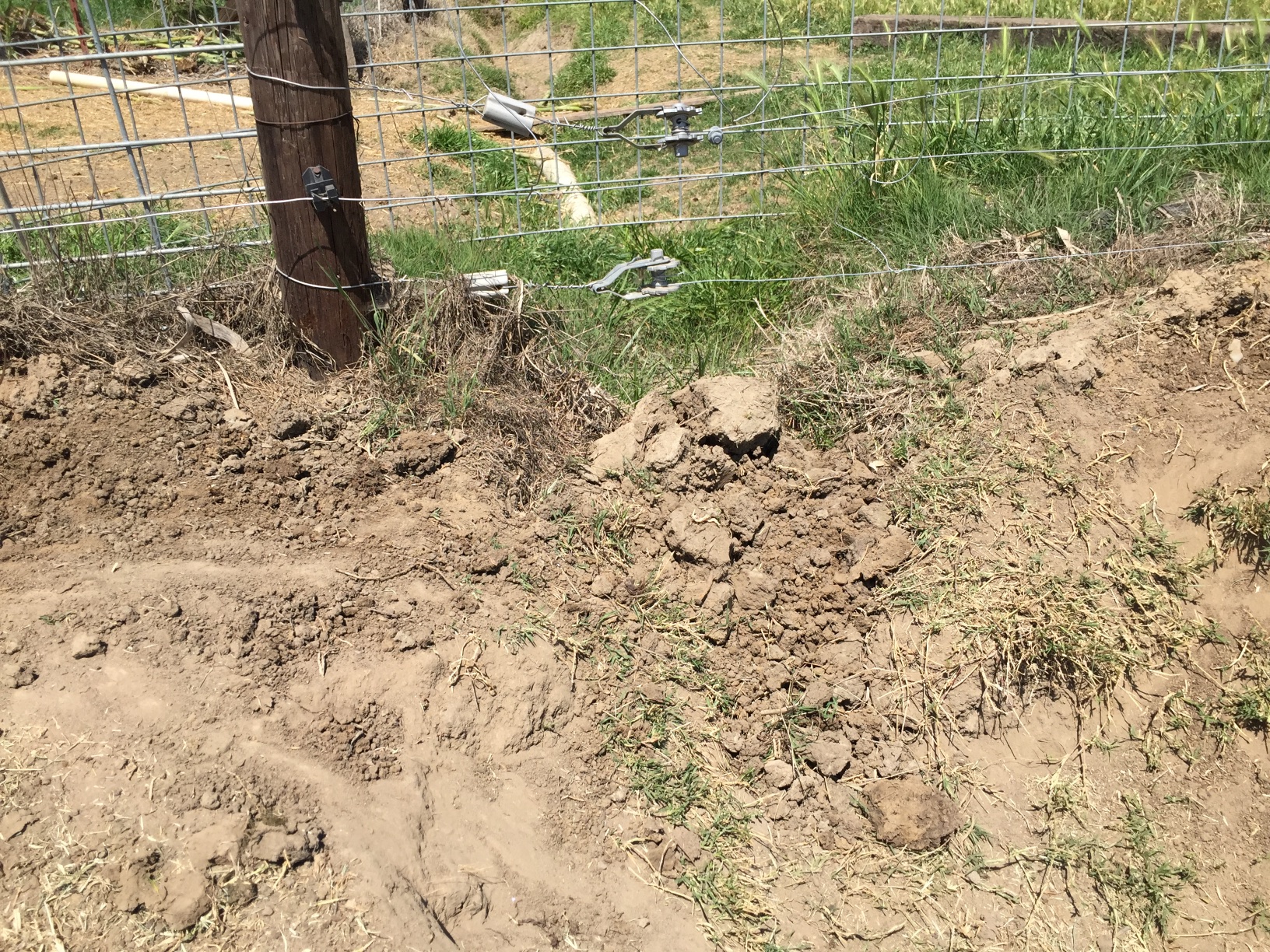 The rest of the pasture doesn't have those pipes, but instead has cut-outs or places where the burm is cut away to allow the water to flow from the ditch into the pasture. I didn't get photos of those. This photo is a cut-out (under the fence) that I had to fill in because it was where we had cut through the burm to allow water flow INTO the ditch in the winter to help drain the rainwater that was all around the barn.
The rest of the pasture doesn't have those pipes, but instead has cut-outs or places where the burm is cut away to allow the water to flow from the ditch into the pasture. I didn't get photos of those. This photo is a cut-out (under the fence) that I had to fill in because it was where we had cut through the burm to allow water flow INTO the ditch in the winter to help drain the rainwater that was all around the barn. 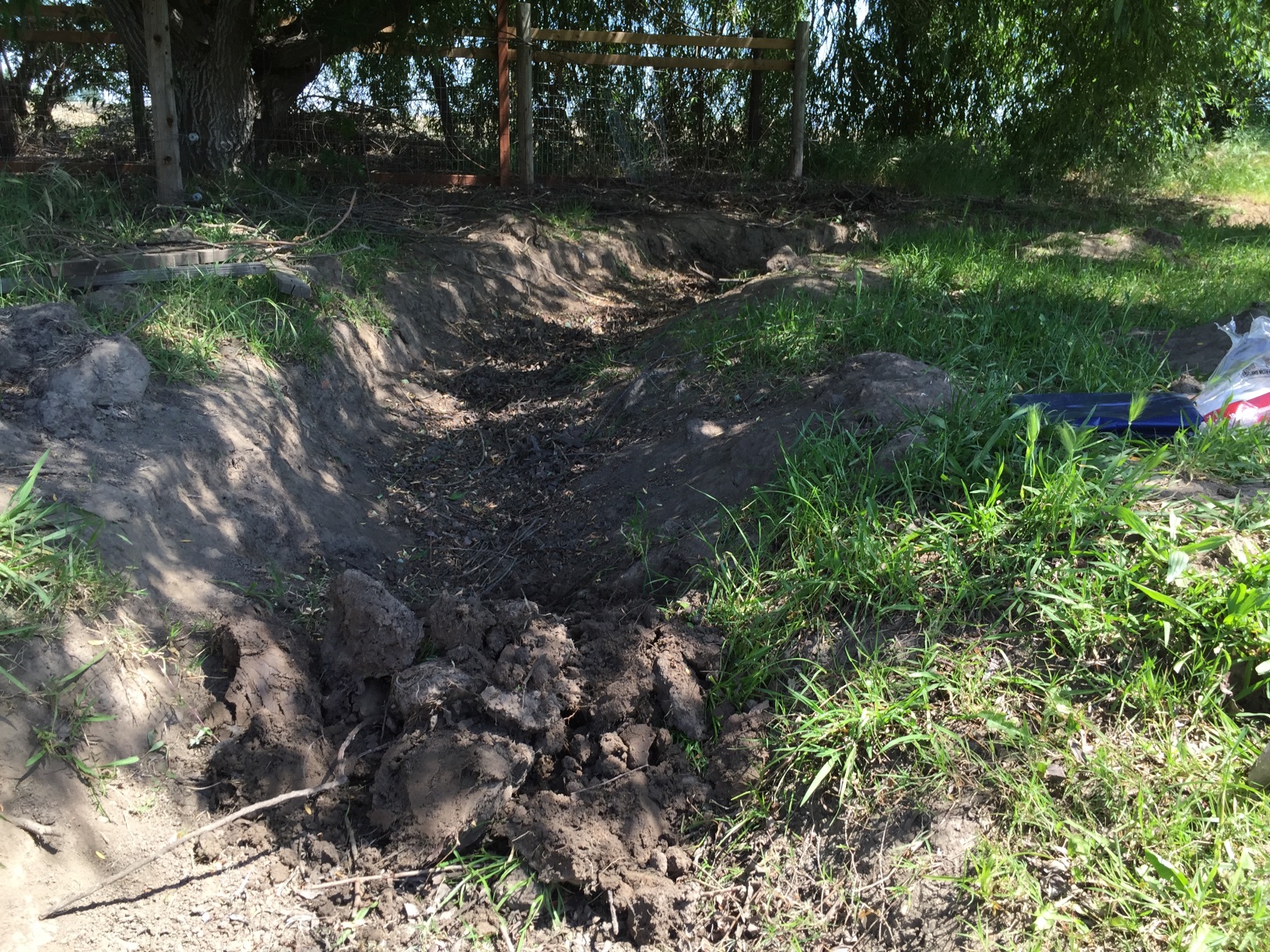 Here is the place at the northeast corner of the pasture where I have to put a tarp to keep the water backed up in the ditch. After this point the ditch turns south and drains at the southeast corner of the property.
Here is the place at the northeast corner of the pasture where I have to put a tarp to keep the water backed up in the ditch. After this point the ditch turns south and drains at the southeast corner of the property.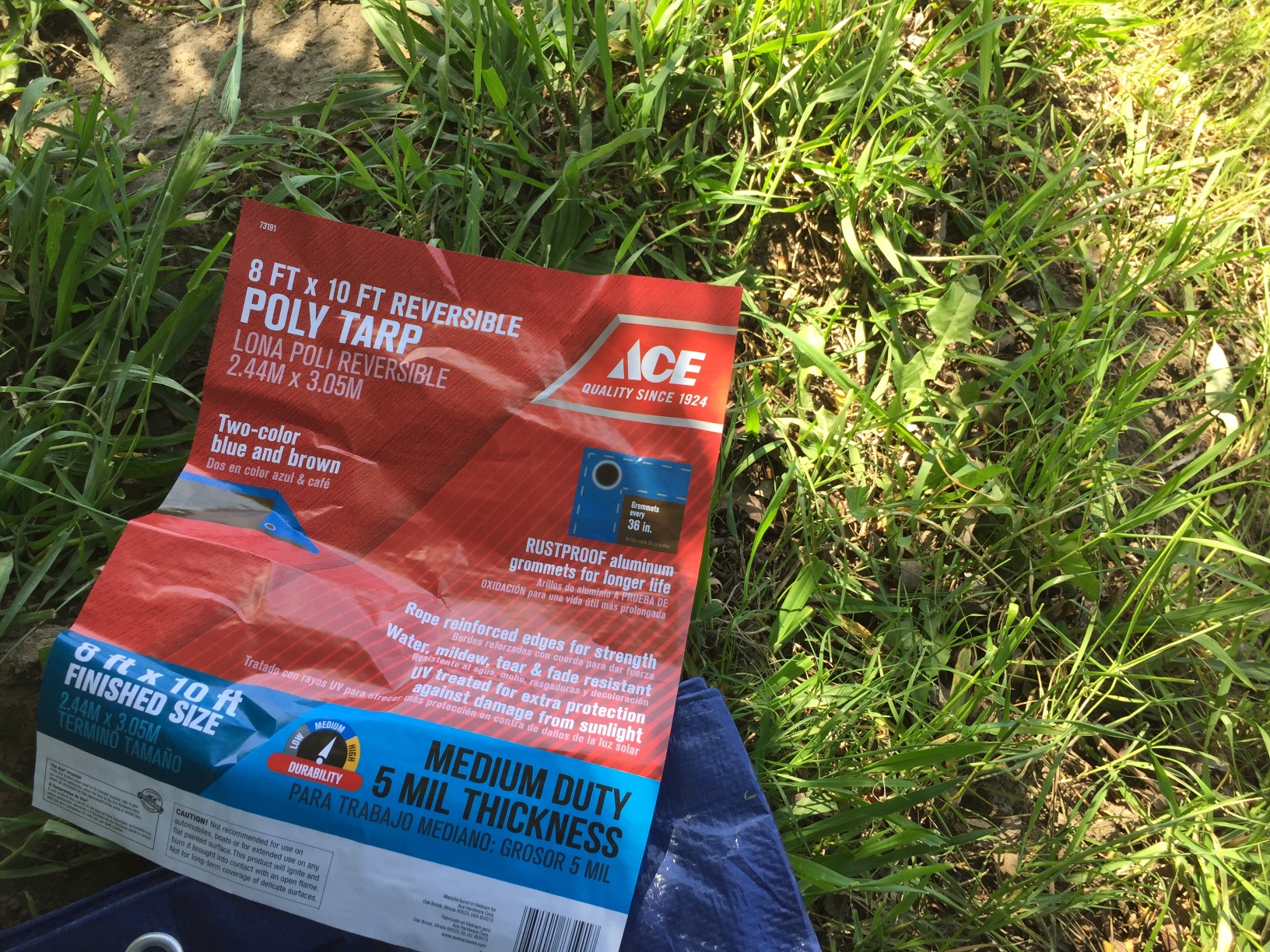 I can never remember what size tarp to get. I bought 2 sizes and took this photo to remind myself that this one is just fine.
I can never remember what size tarp to get. I bought 2 sizes and took this photo to remind myself that this one is just fine.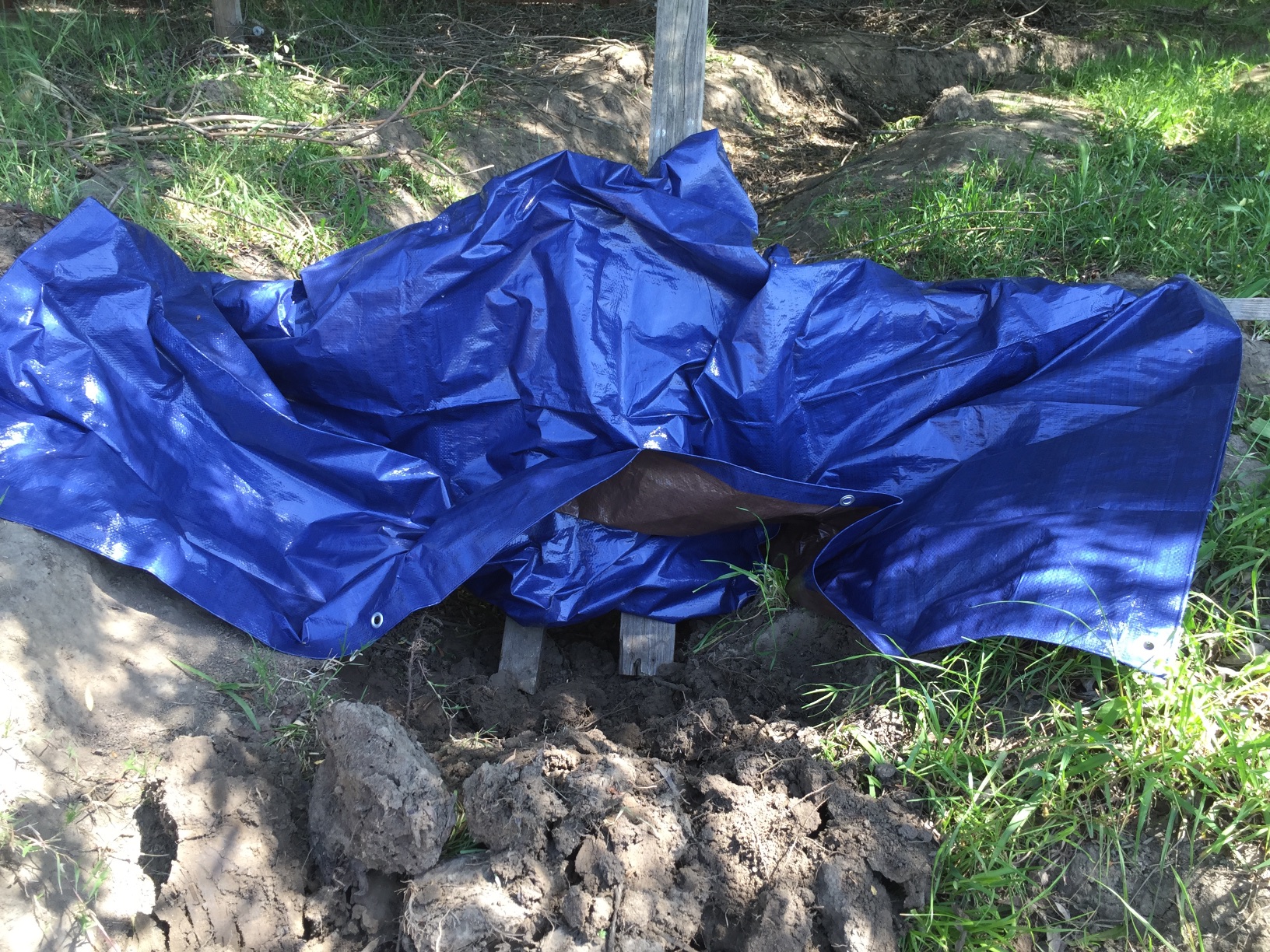 The idea is to set the tarp so that the edges are buried in dirt and those boards behind will keep the water from pushing the tarp down flat. I did this twice.
The idea is to set the tarp so that the edges are buried in dirt and those boards behind will keep the water from pushing the tarp down flat. I did this twice. 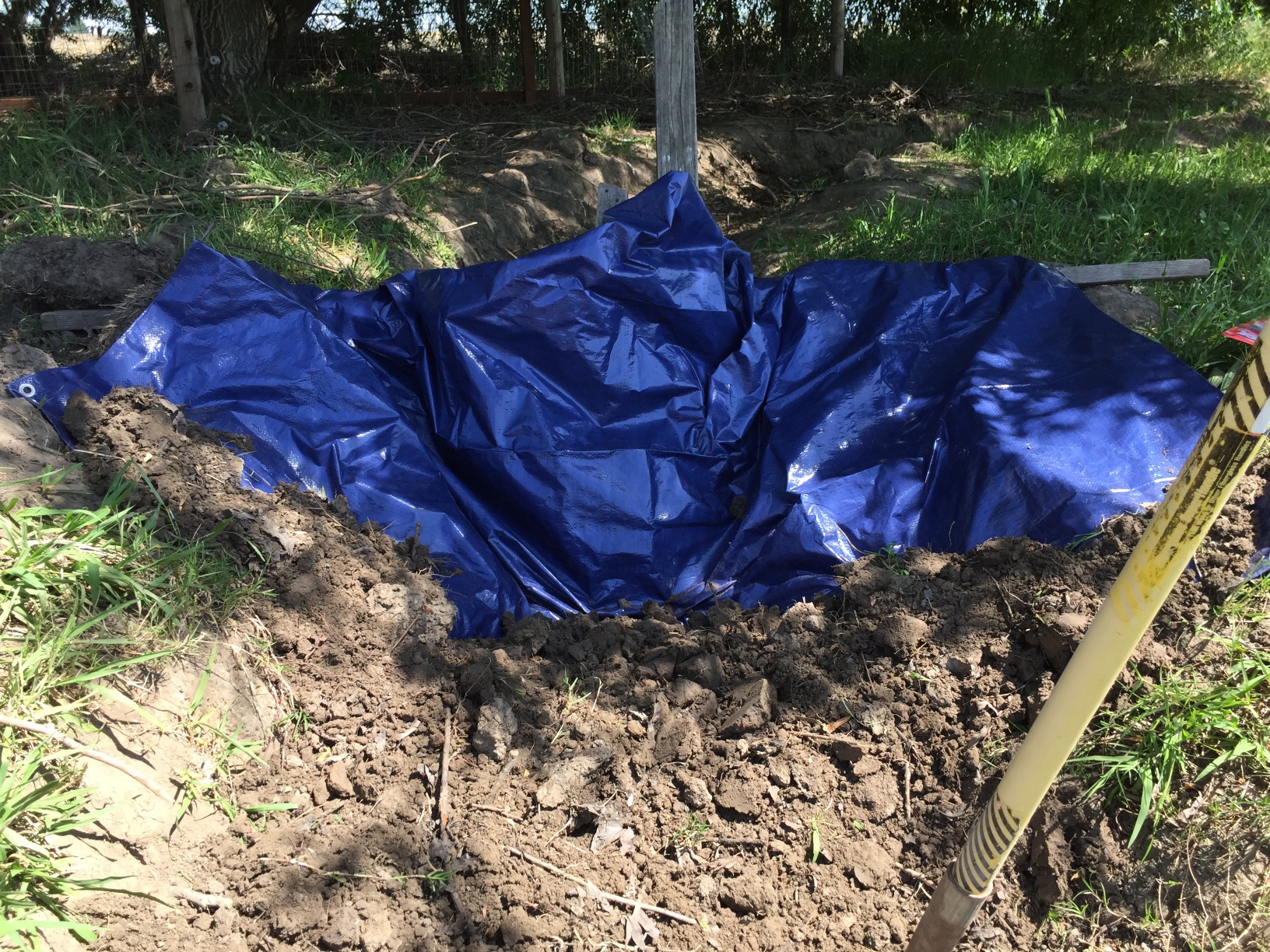 The first time the dirt that holds the tarp down on the bottom was too high. That means when I released the tarp at the end of irrigating there would still be a dam. I have a hard enough time getting the ditch to empty that I don't need to impede it more.
The first time the dirt that holds the tarp down on the bottom was too high. That means when I released the tarp at the end of irrigating there would still be a dam. I have a hard enough time getting the ditch to empty that I don't need to impede it more.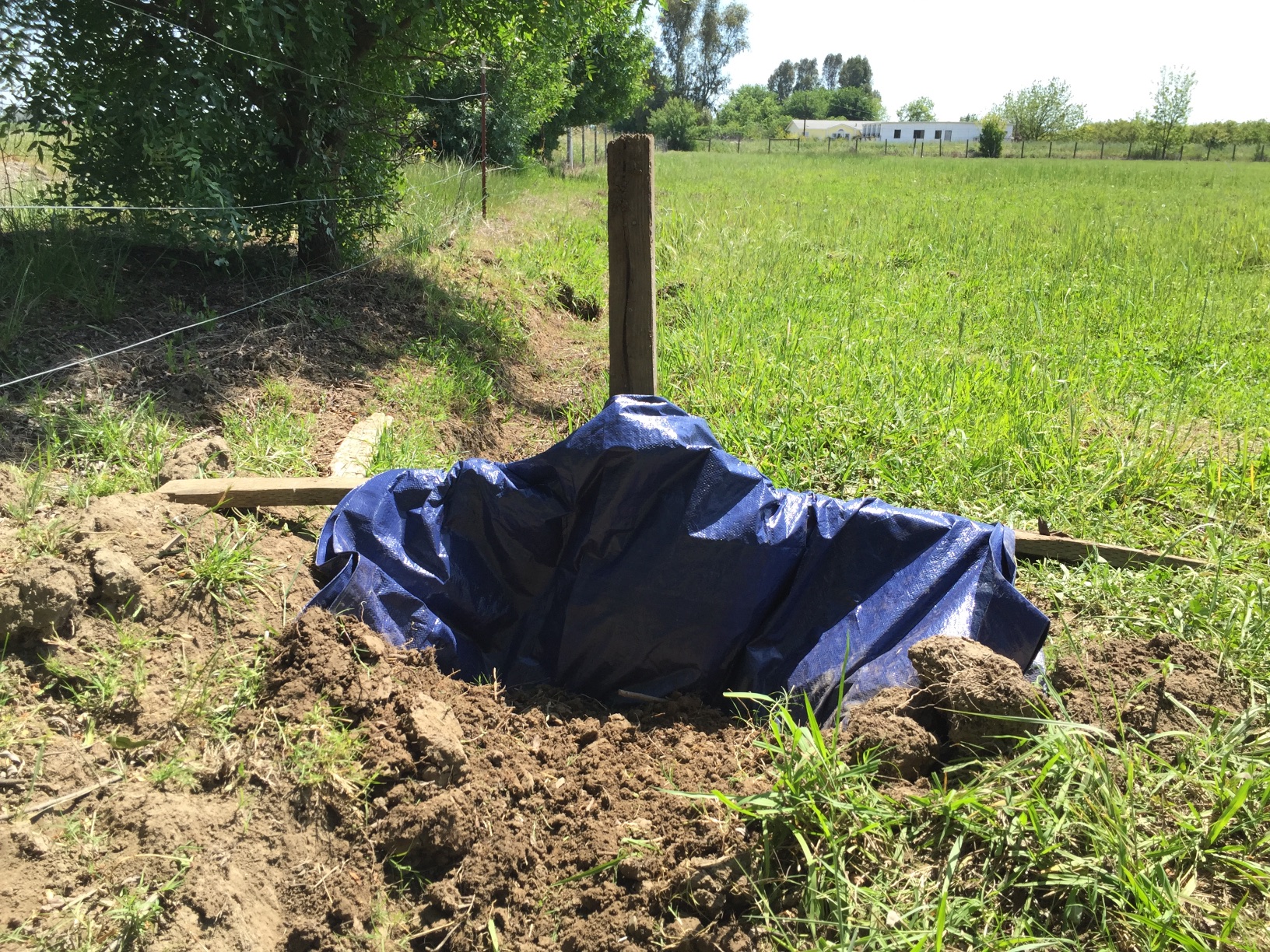 This is a second tarp that I set just around the corner in the ditch that goes south. I shouldn't have to do this, but due to gopher holes, tree roots, and maybe my lack of irrigator skills it seems that one is never enough. Two tarps hold the water back better. Or at least one is a back-up for the other.
This is a second tarp that I set just around the corner in the ditch that goes south. I shouldn't have to do this, but due to gopher holes, tree roots, and maybe my lack of irrigator skills it seems that one is never enough. Two tarps hold the water back better. Or at least one is a back-up for the other.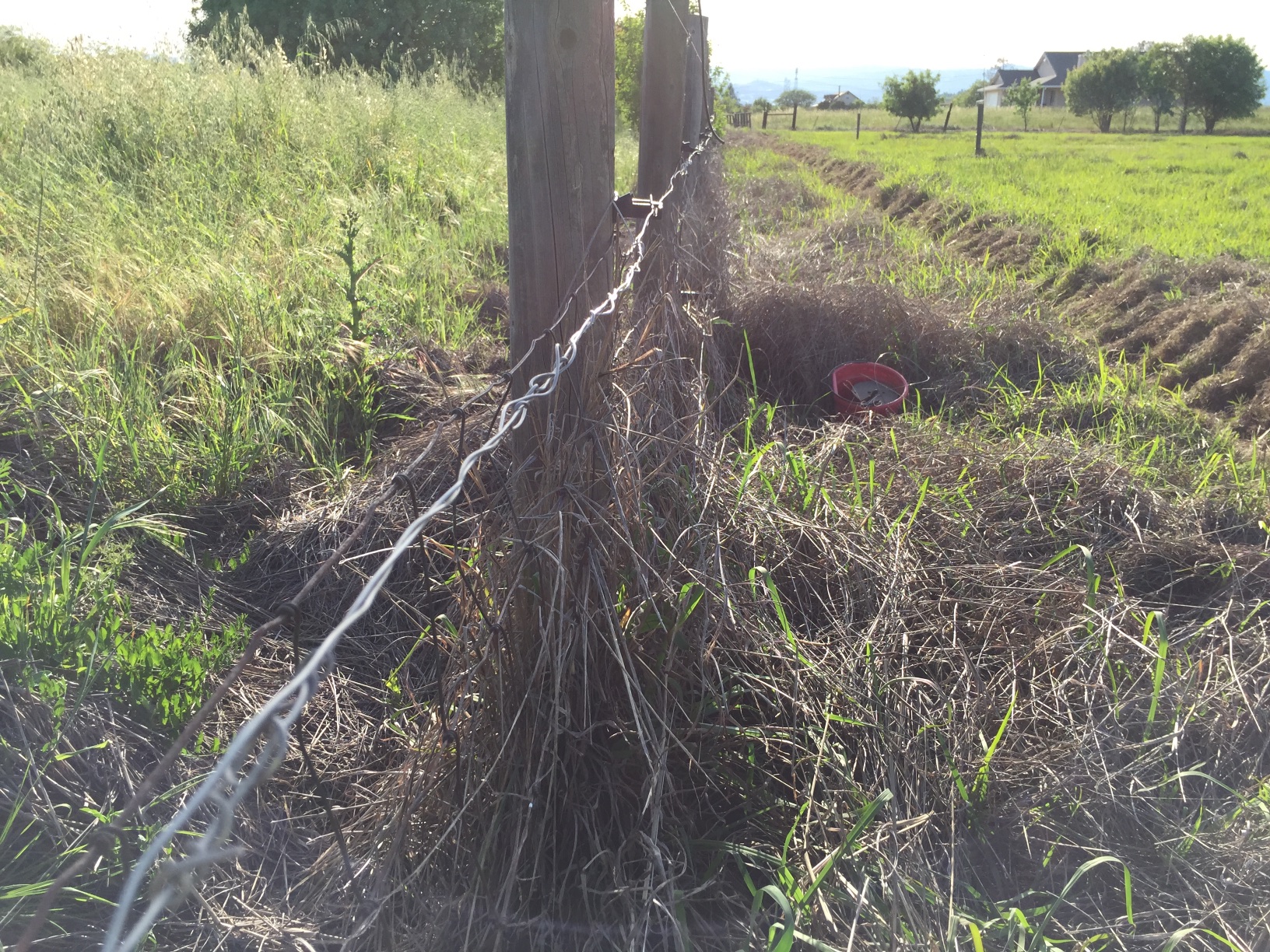 While I was working in the pasture I saw that a couple of lambs had their heads through the electric net fence and didn't seem to care. That prompted a search for the problem with the electric fence. I found a broken wire at the south end. I got new wire and fixed it but then found several more places where I had joined new wire to old. The more times you do that the less conductivity there is. So I took out a long stretch of the old pieced-together wire and replaced it. Low and behold, my tester showed higher strength than it has in years!
While I was working in the pasture I saw that a couple of lambs had their heads through the electric net fence and didn't seem to care. That prompted a search for the problem with the electric fence. I found a broken wire at the south end. I got new wire and fixed it but then found several more places where I had joined new wire to old. The more times you do that the less conductivity there is. So I took out a long stretch of the old pieced-together wire and replaced it. Low and behold, my tester showed higher strength than it has in years!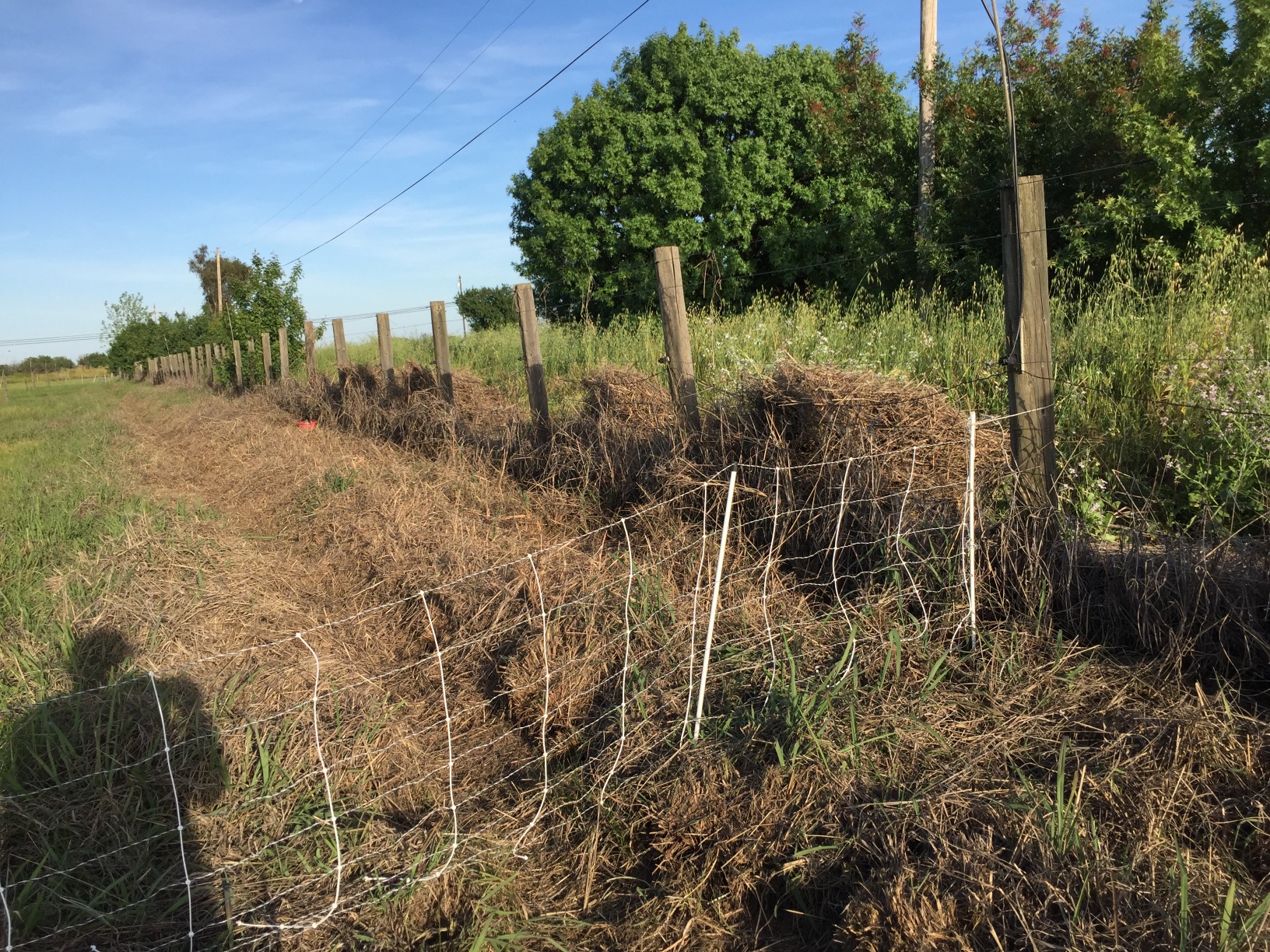 One thing leads to another. While I was at that end of the pasture I was bothered again by the old dallisgrass that effectively mulches my pasture. It's one thing to mulch a garden to keep weeds from growing, but mulching a pasture is counter-productive. If you search dallisgrass in this blog you'll find many attempts to deal with this. This time I was simply knocking it off the electric wire that is about a foot and a half up on inside this fenceline. It broke and pulled away so easily at this time (this is last year's dry grass) that I started pulling it away by the armfuls. I didn't have any tools or even gloves, but threw mounds of it over the fence--hey, I'll mulch the outside of the fence and maybe keep the growth down there. That felt somewhat productive although it may not be useful at all. But at least I could see a difference in the before and after.
One thing leads to another. While I was at that end of the pasture I was bothered again by the old dallisgrass that effectively mulches my pasture. It's one thing to mulch a garden to keep weeds from growing, but mulching a pasture is counter-productive. If you search dallisgrass in this blog you'll find many attempts to deal with this. This time I was simply knocking it off the electric wire that is about a foot and a half up on inside this fenceline. It broke and pulled away so easily at this time (this is last year's dry grass) that I started pulling it away by the armfuls. I didn't have any tools or even gloves, but threw mounds of it over the fence--hey, I'll mulch the outside of the fence and maybe keep the growth down there. That felt somewhat productive although it may not be useful at all. But at least I could see a difference in the before and after.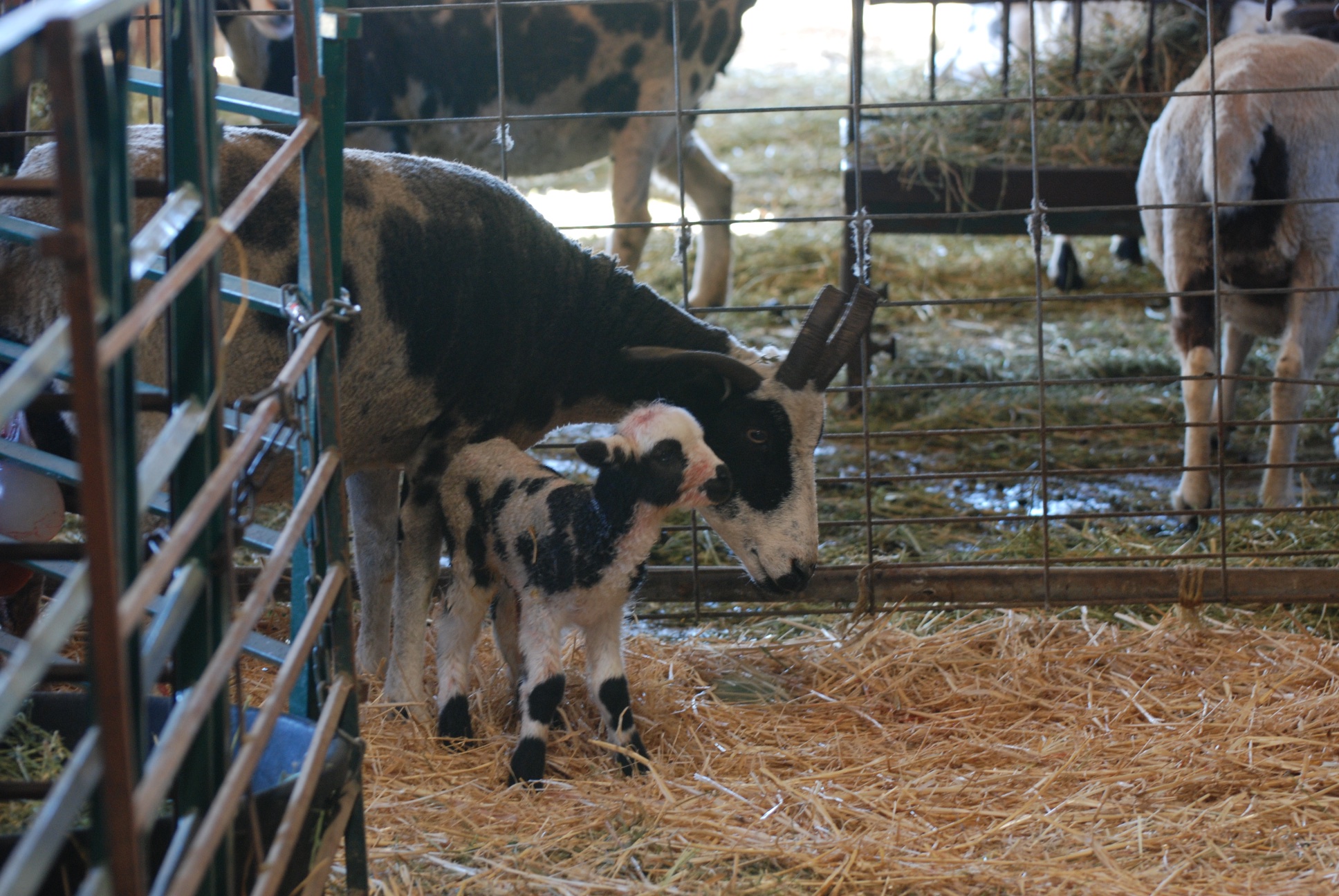 Lana had a very pretty lilac ewe lamb. Eventually, after it seemed things were taking a long time, I checked and found another lamb, pulled it, and spent about twenty minutes trying to make it live. I don't know if it was doomed from the start or aspirated fluid during birth, but it could never get a good enough breath and it died.
Lana had a very pretty lilac ewe lamb. Eventually, after it seemed things were taking a long time, I checked and found another lamb, pulled it, and spent about twenty minutes trying to make it live. I don't know if it was doomed from the start or aspirated fluid during birth, but it could never get a good enough breath and it died. 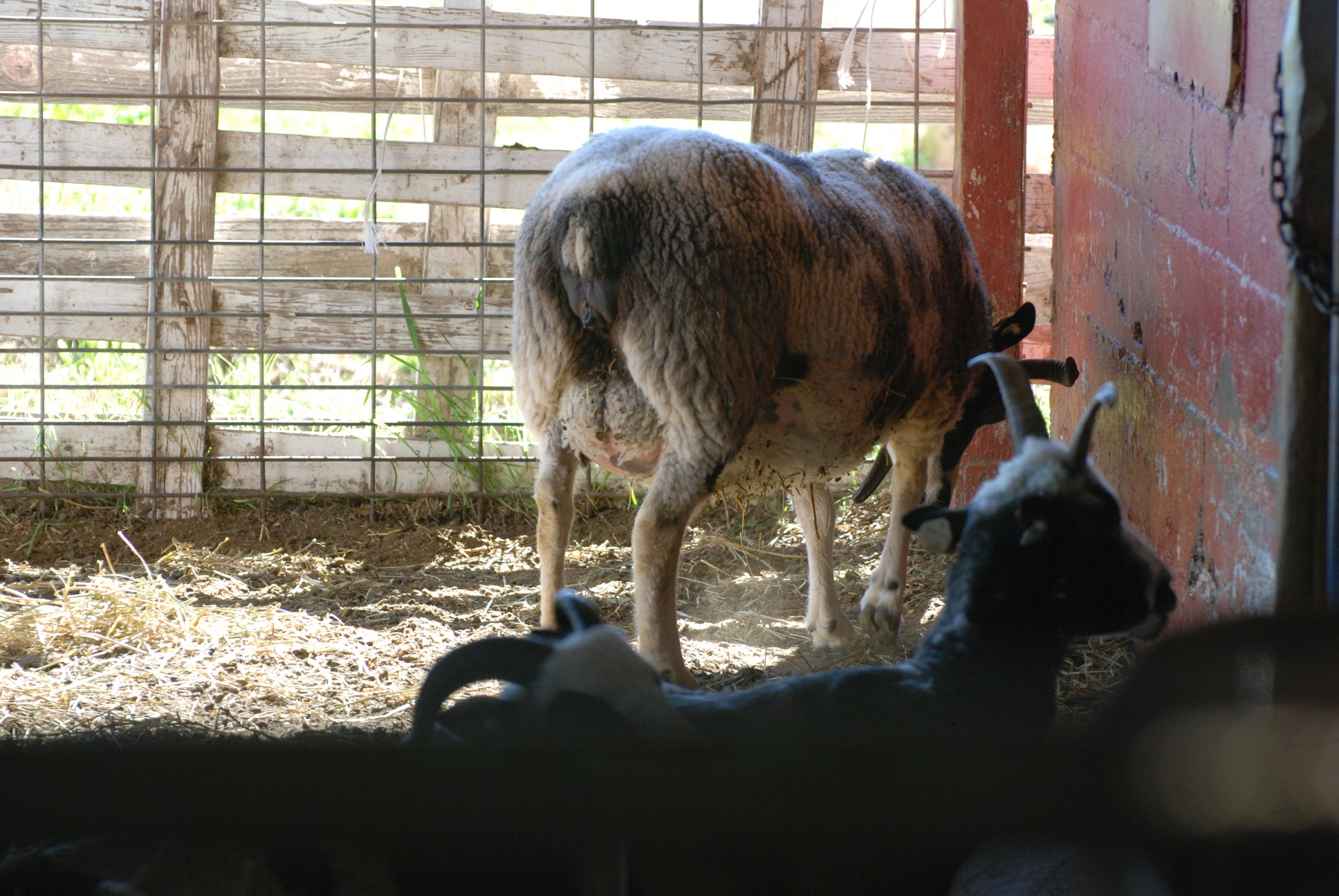 In the meantime Raquel was in labor. I have been in touch with some students at the UC Davis vet school who are interested in coming out for some hands-on practice. It's been difficult to coordinate their schedules with sheep lambing, but they were able to come out then for a couple of hours. Unfortunately Raquel didn't lamb while they were here but they did do some ear tagging, tail banding...
In the meantime Raquel was in labor. I have been in touch with some students at the UC Davis vet school who are interested in coming out for some hands-on practice. It's been difficult to coordinate their schedules with sheep lambing, but they were able to come out then for a couple of hours. Unfortunately Raquel didn't lamb while they were here but they did do some ear tagging, tail banding...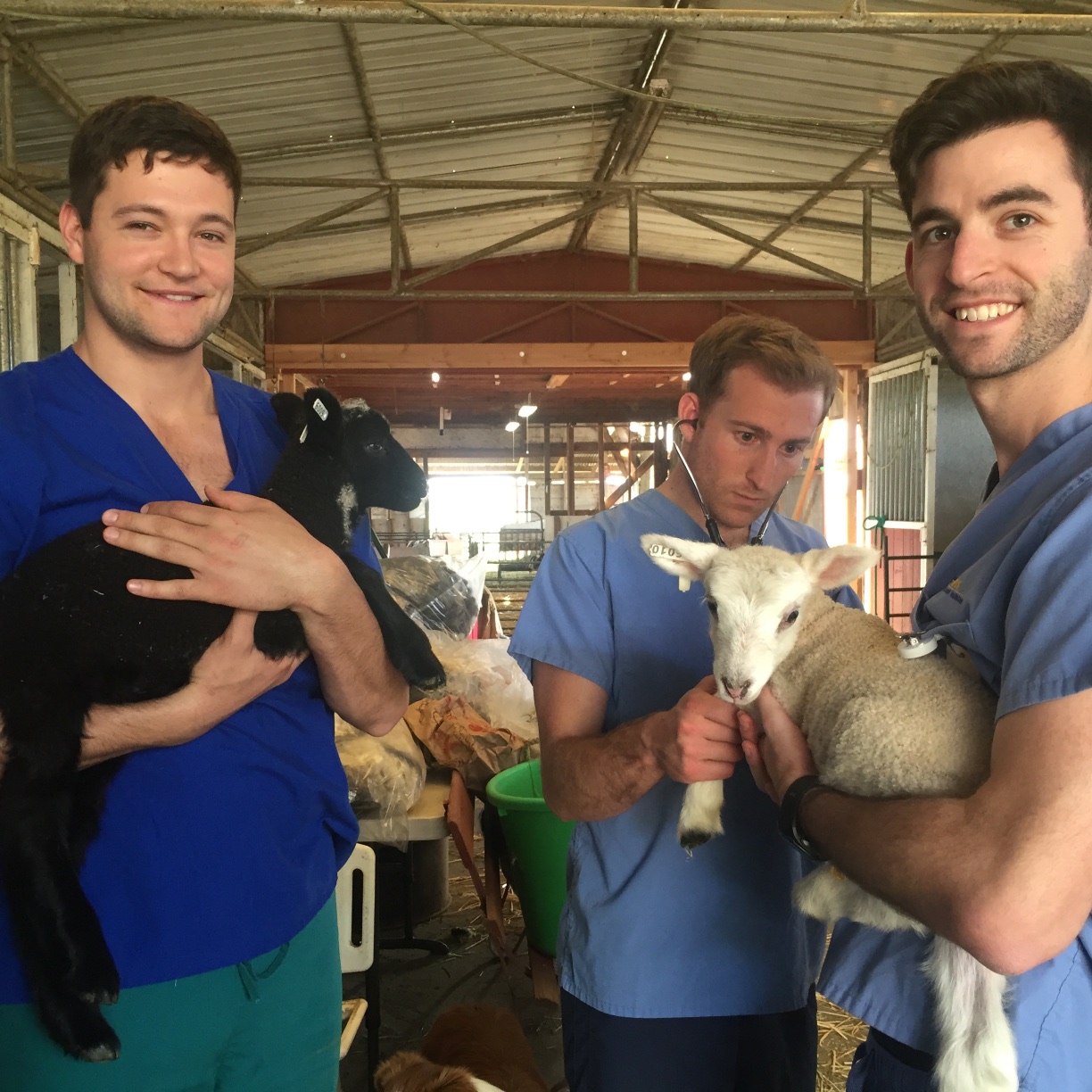 ...and they listened to the normal and the not-as-healthy lungs of these twins, one of whom has been getting penicillin because he almost died from pneumonia following a difficult birth (in
...and they listened to the normal and the not-as-healthy lungs of these twins, one of whom has been getting penicillin because he almost died from pneumonia following a difficult birth (in 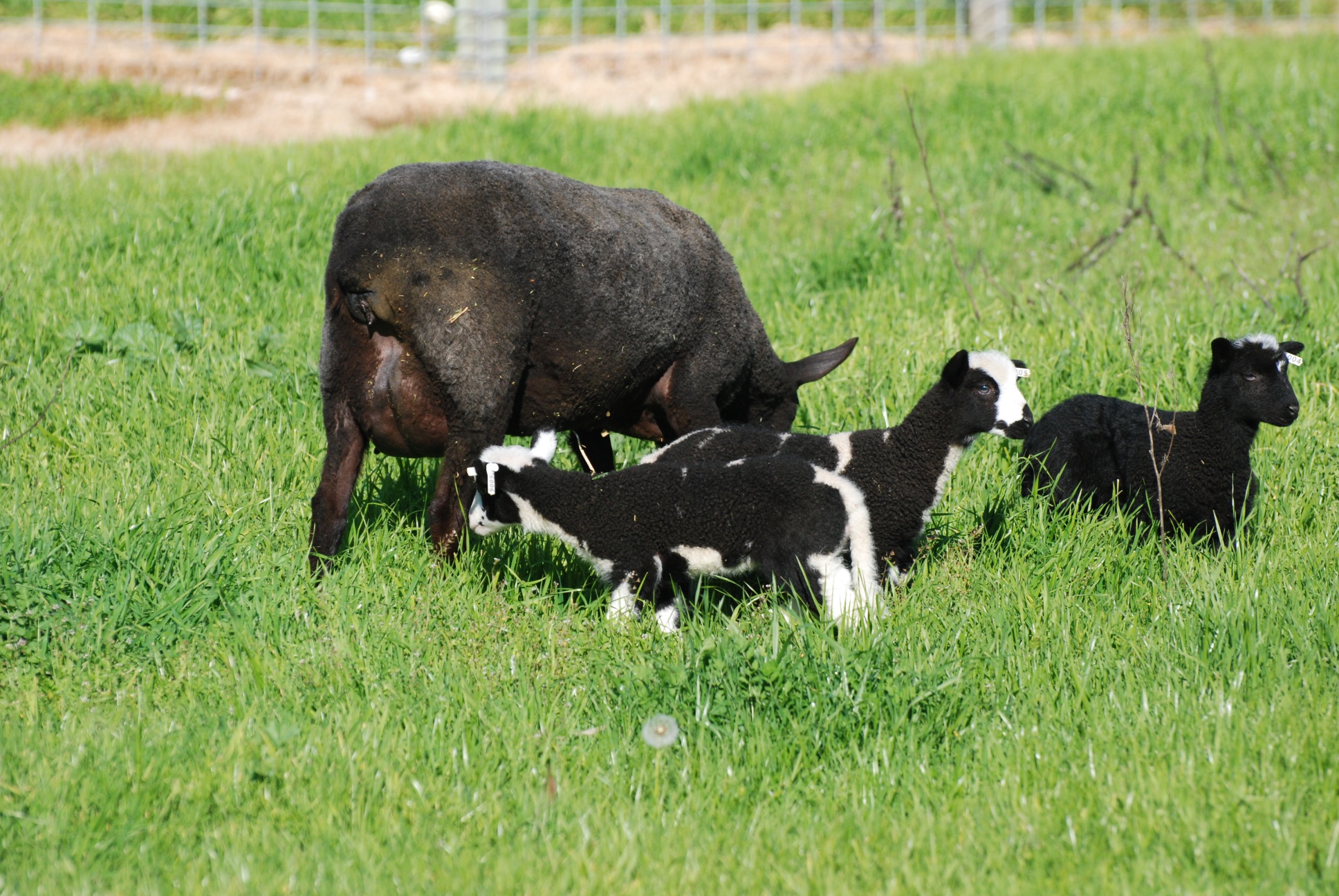 We finally got the ewes with the first lambs out on the pasture. Can you tell where all the mom's food is going now?
We finally got the ewes with the first lambs out on the pasture. Can you tell where all the mom's food is going now?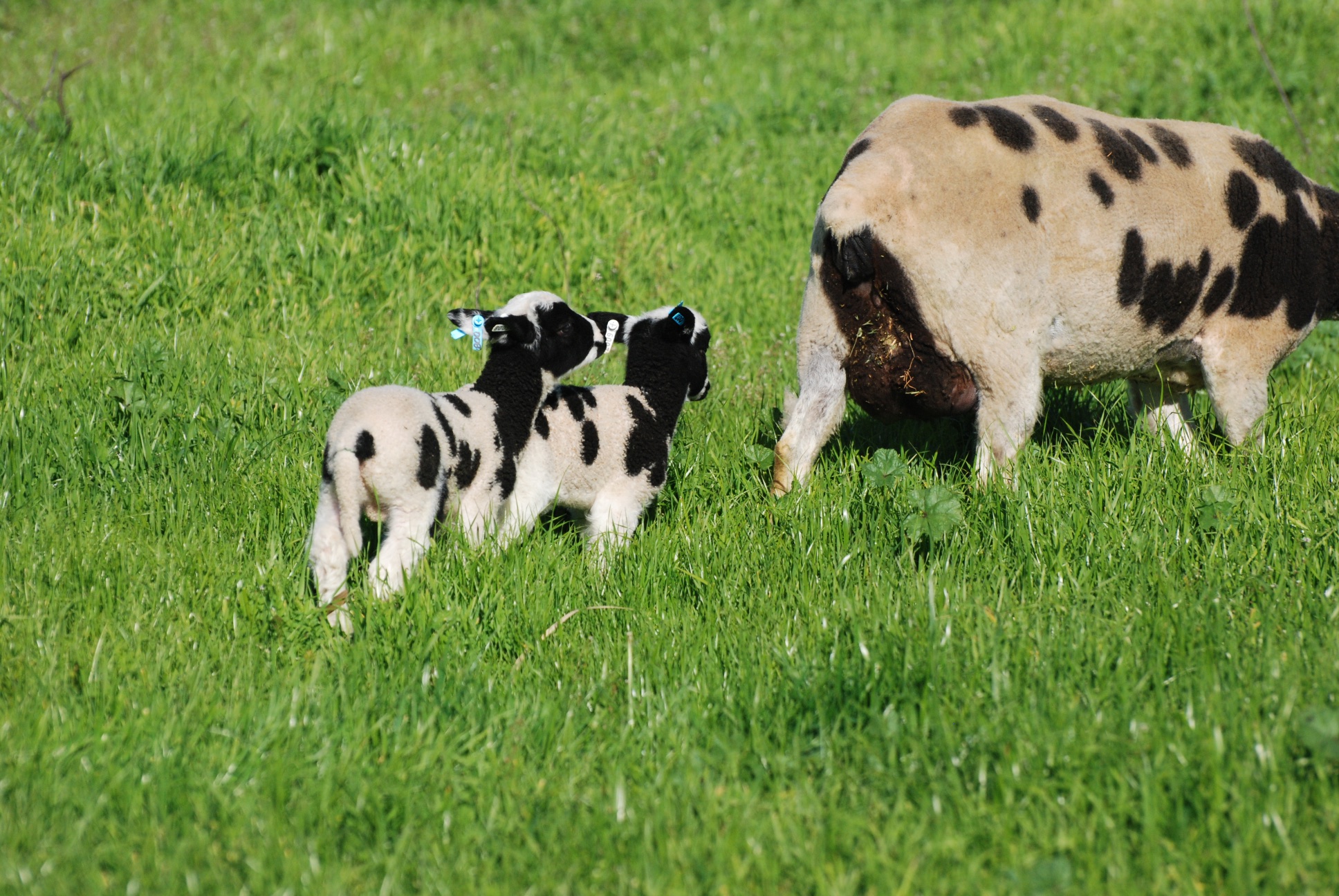 After getting the ewe through the end of pregnancy and then lambing in good health, the next challenge is keeping an eye on the udder health. As the milk is coming in (the lesser amount of colostrum giving way to a greater quantity of milk) the udder may become engorged. If there is tenderness and the ewe doesn't let the lambs nurse on one side it becomes a vicious cycle. Sore udder and teat...no nursing...more milk backing up...udder more full and sore. This can eventually lead to mastitis which, if not treated, can ultimately kill the ewe or at least ruin her udder.
After getting the ewe through the end of pregnancy and then lambing in good health, the next challenge is keeping an eye on the udder health. As the milk is coming in (the lesser amount of colostrum giving way to a greater quantity of milk) the udder may become engorged. If there is tenderness and the ewe doesn't let the lambs nurse on one side it becomes a vicious cycle. Sore udder and teat...no nursing...more milk backing up...udder more full and sore. This can eventually lead to mastitis which, if not treated, can ultimately kill the ewe or at least ruin her udder.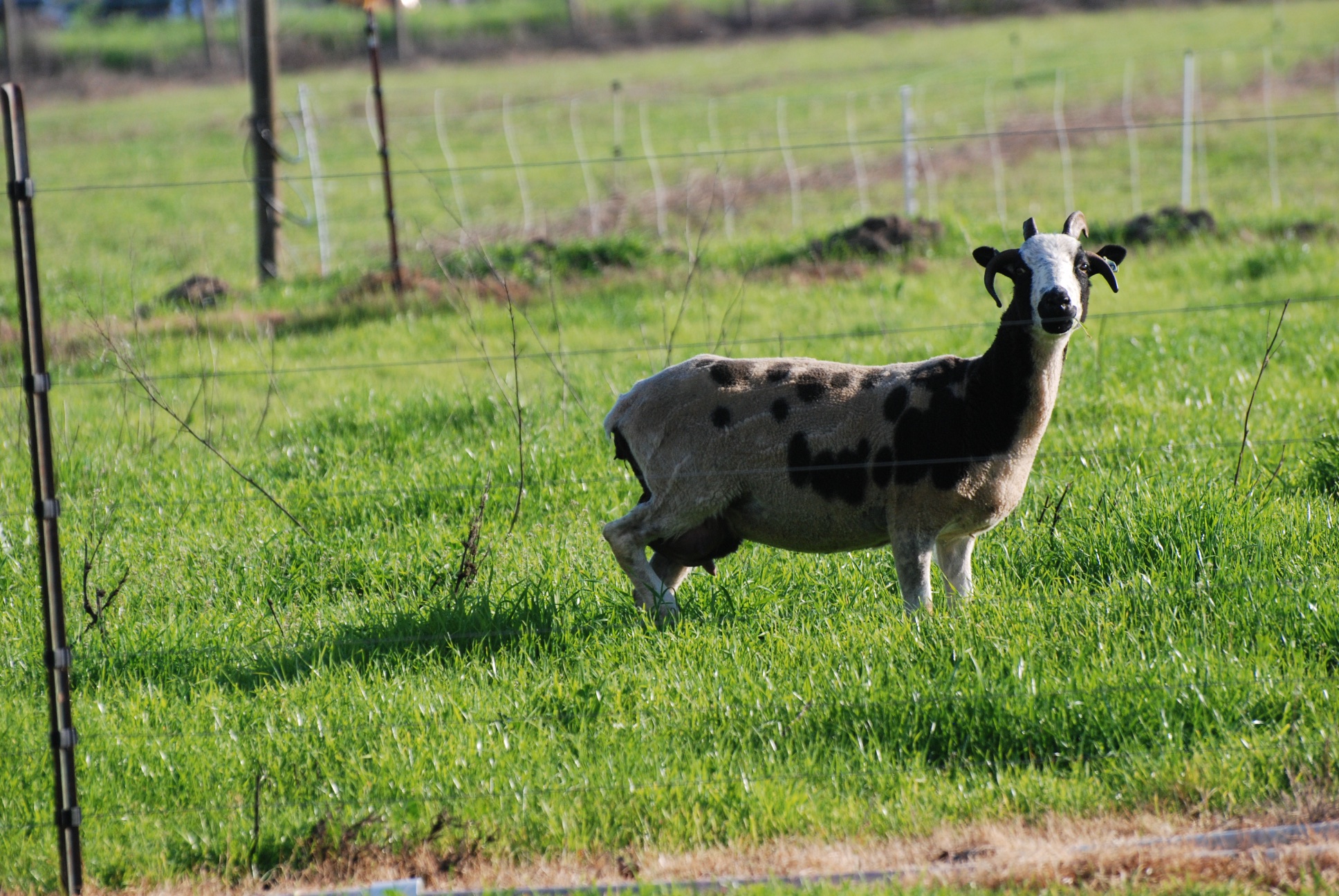 Walking back to the house I noticed Mae standing like this. "Lameness" in a ewe who in nursing lambs may have nothing to do with the feet at all, but be because her udder is full and painful.
Walking back to the house I noticed Mae standing like this. "Lameness" in a ewe who in nursing lambs may have nothing to do with the feet at all, but be because her udder is full and painful.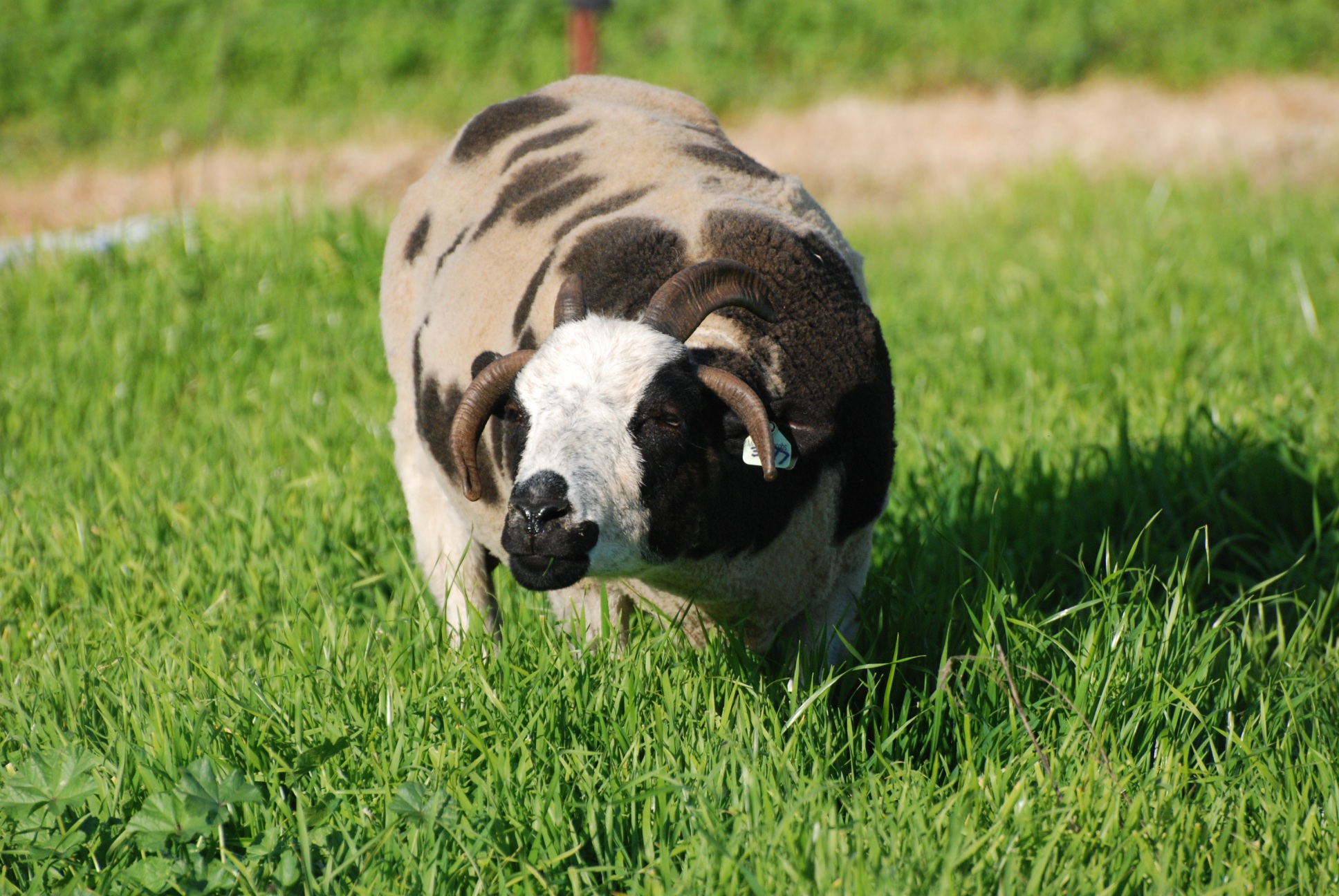 I went out to get her and bring her to the barn. I am amused by her response to me approaching.
I went out to get her and bring her to the barn. I am amused by her response to me approaching.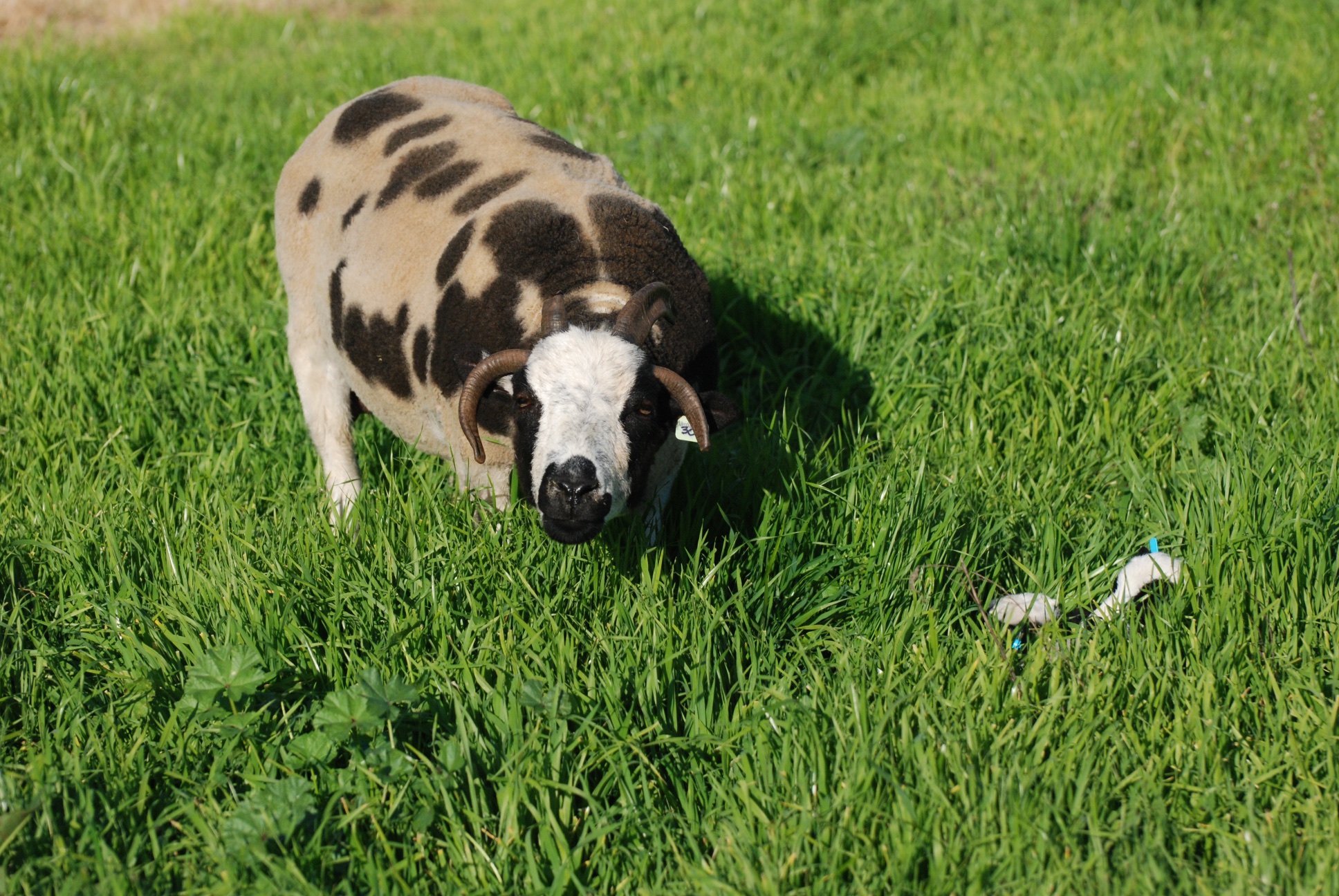 This is why. Her lambs are hidden in the grass.
This is why. Her lambs are hidden in the grass.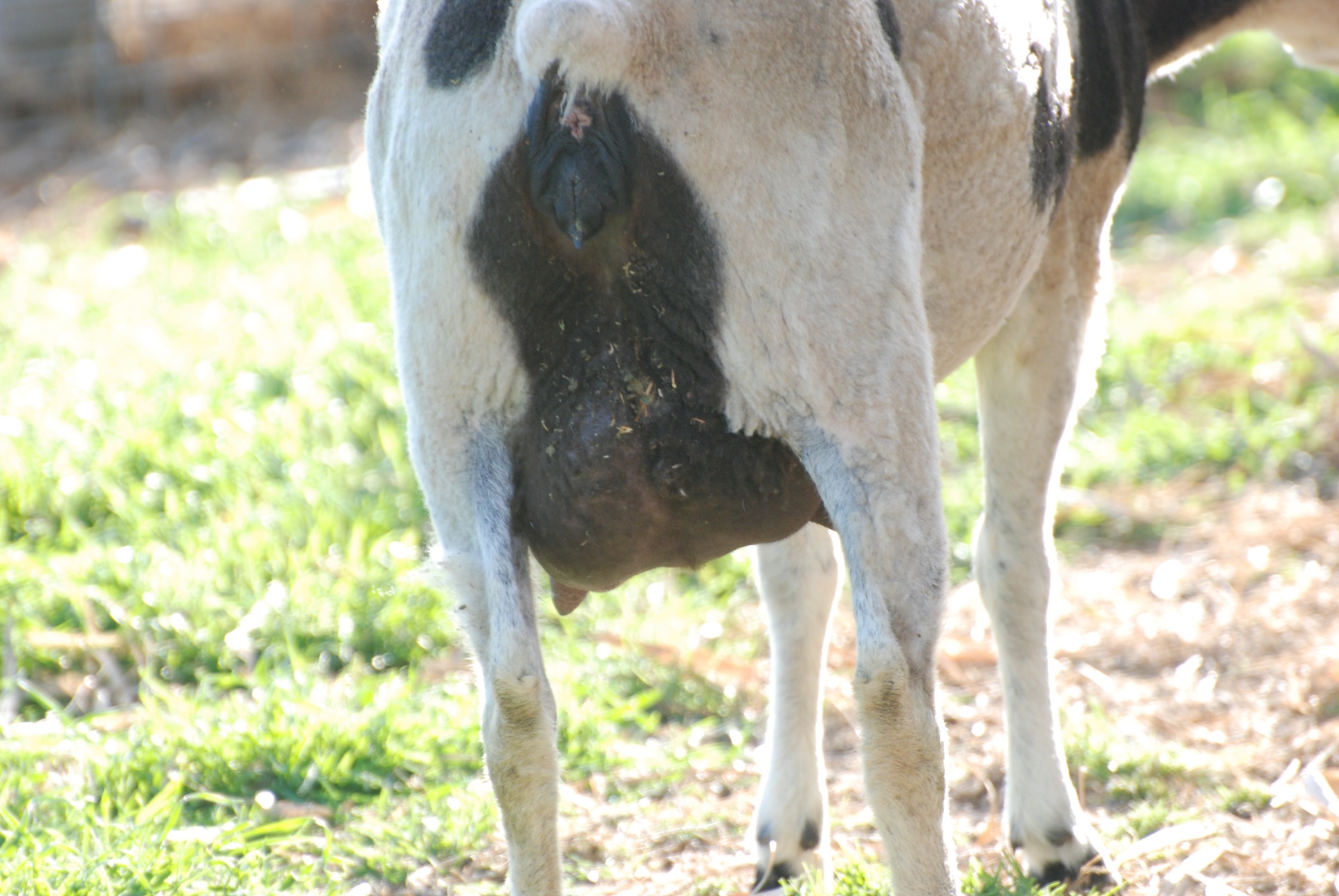 This is how Mae looked walking back to the barn.
This is how Mae looked walking back to the barn.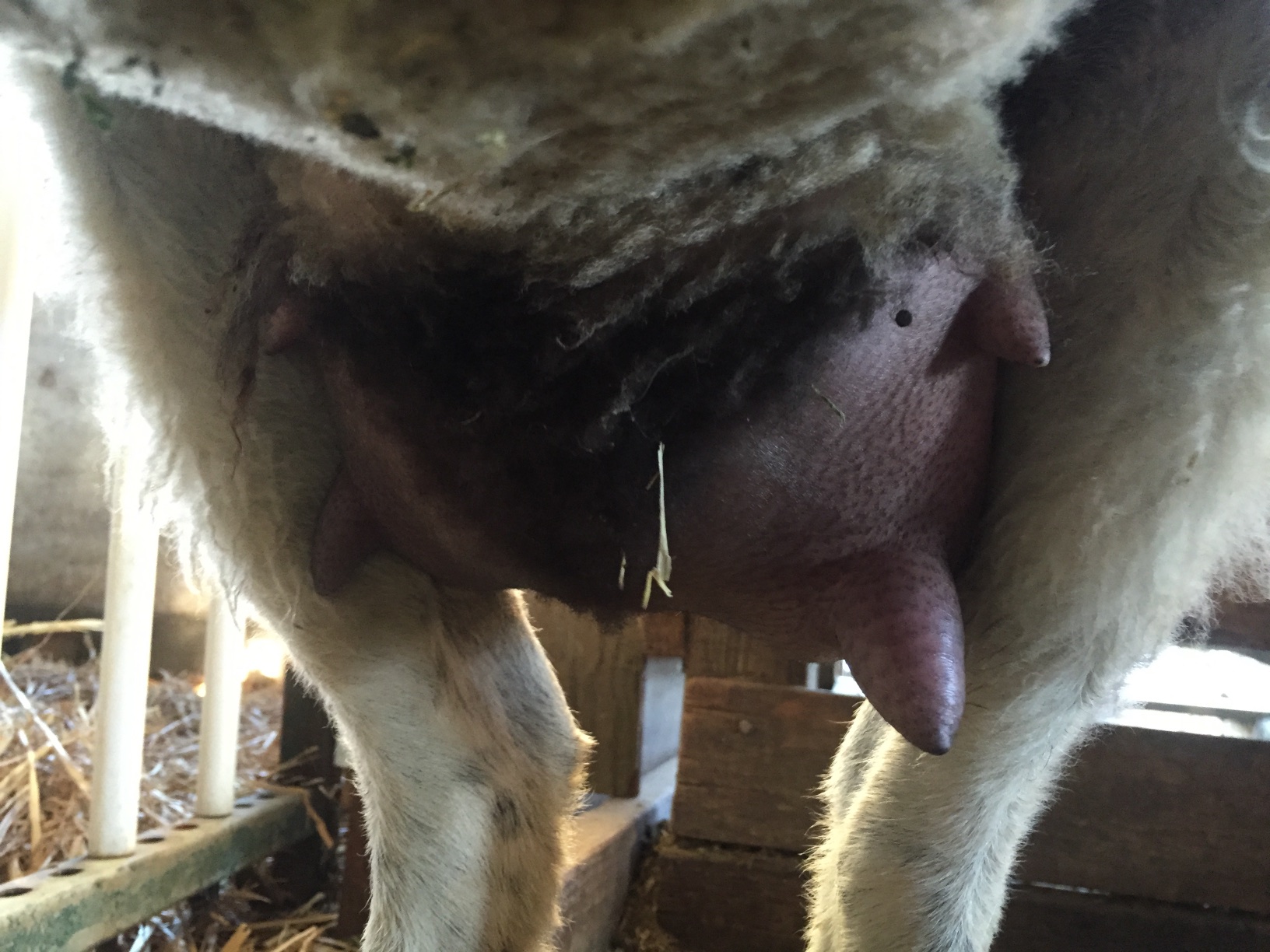 This is from the front. I tied her to the fence and milked the one side, taking 7.5 ounces.
This is from the front. I tied her to the fence and milked the one side, taking 7.5 ounces.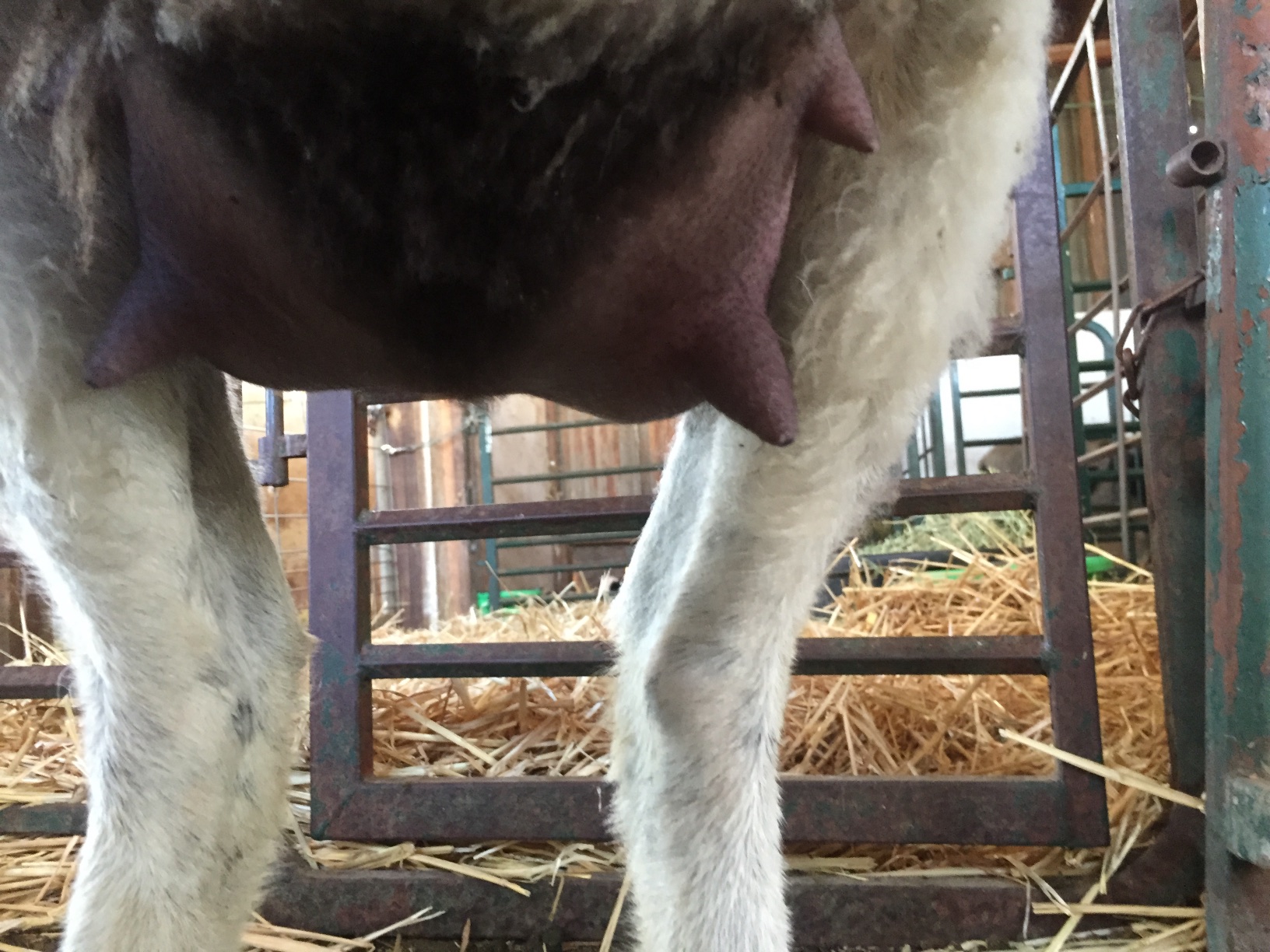 Then it looked and felt balanced. I milked her again this morning. There was another ewe in a similar situation and I had to milk her a couple of times. I have to remember to be watching for that over the next few weeks as these ewes lamb.
Then it looked and felt balanced. I milked her again this morning. There was another ewe in a similar situation and I had to milk her a couple of times. I have to remember to be watching for that over the next few weeks as these ewes lamb.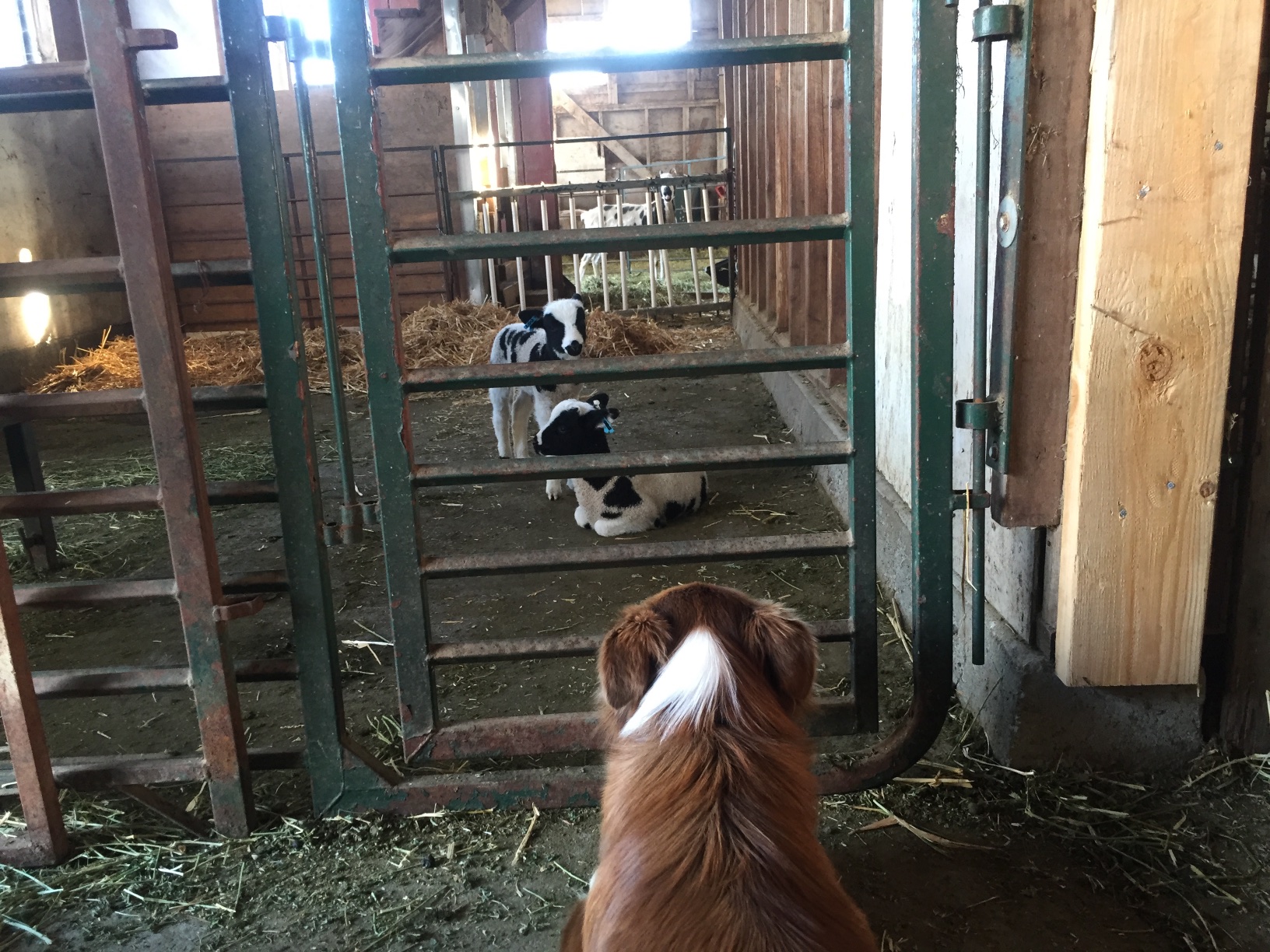 We set up the creep for the lambs. They can get through the narrow slots on that panel. The ewes aren't always happy that their babies can go somewhere that they can't follow.
We set up the creep for the lambs. They can get through the narrow slots on that panel. The ewes aren't always happy that their babies can go somewhere that they can't follow.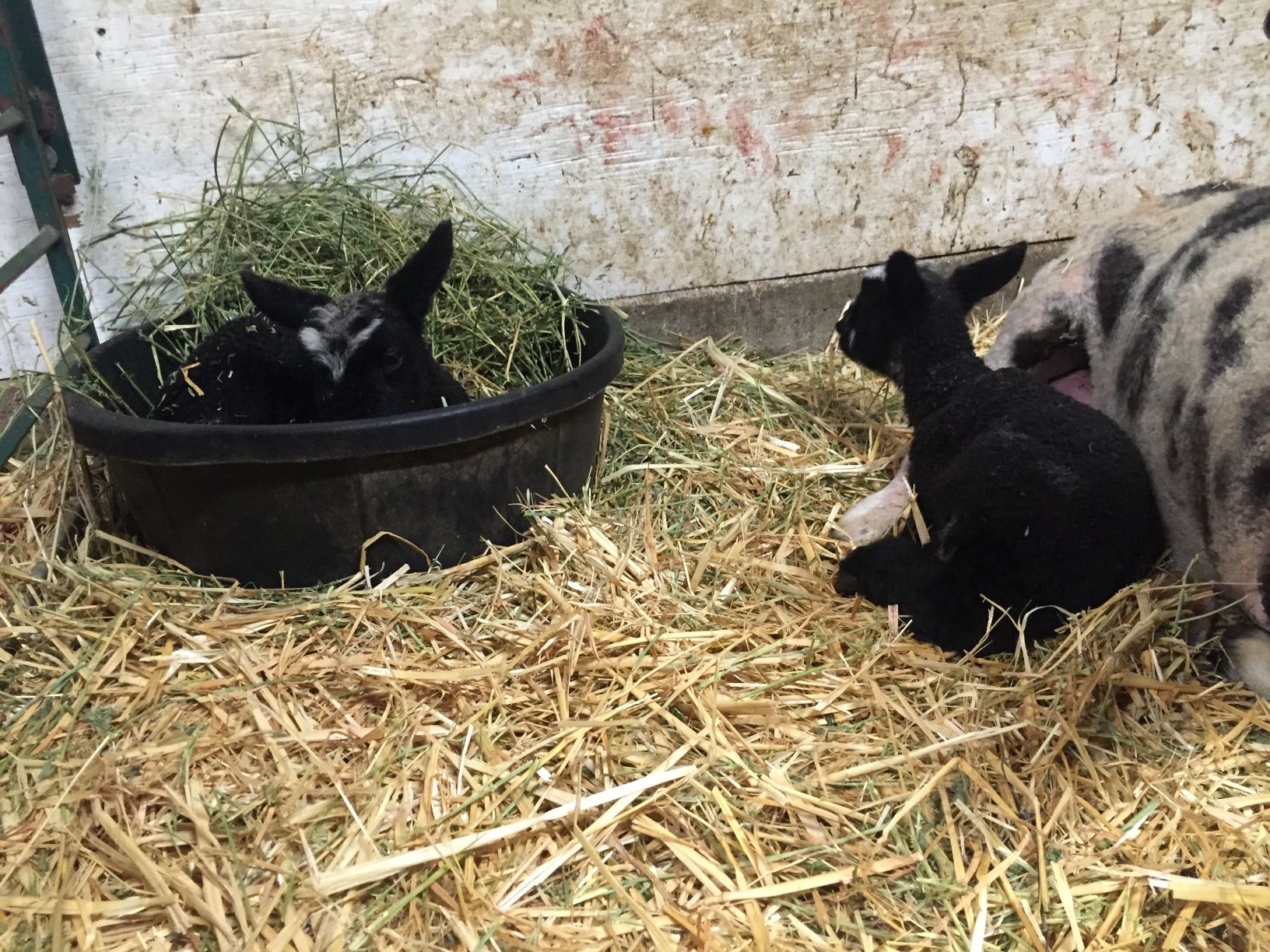 These are BFL-X lambs born the night before.
These are BFL-X lambs born the night before.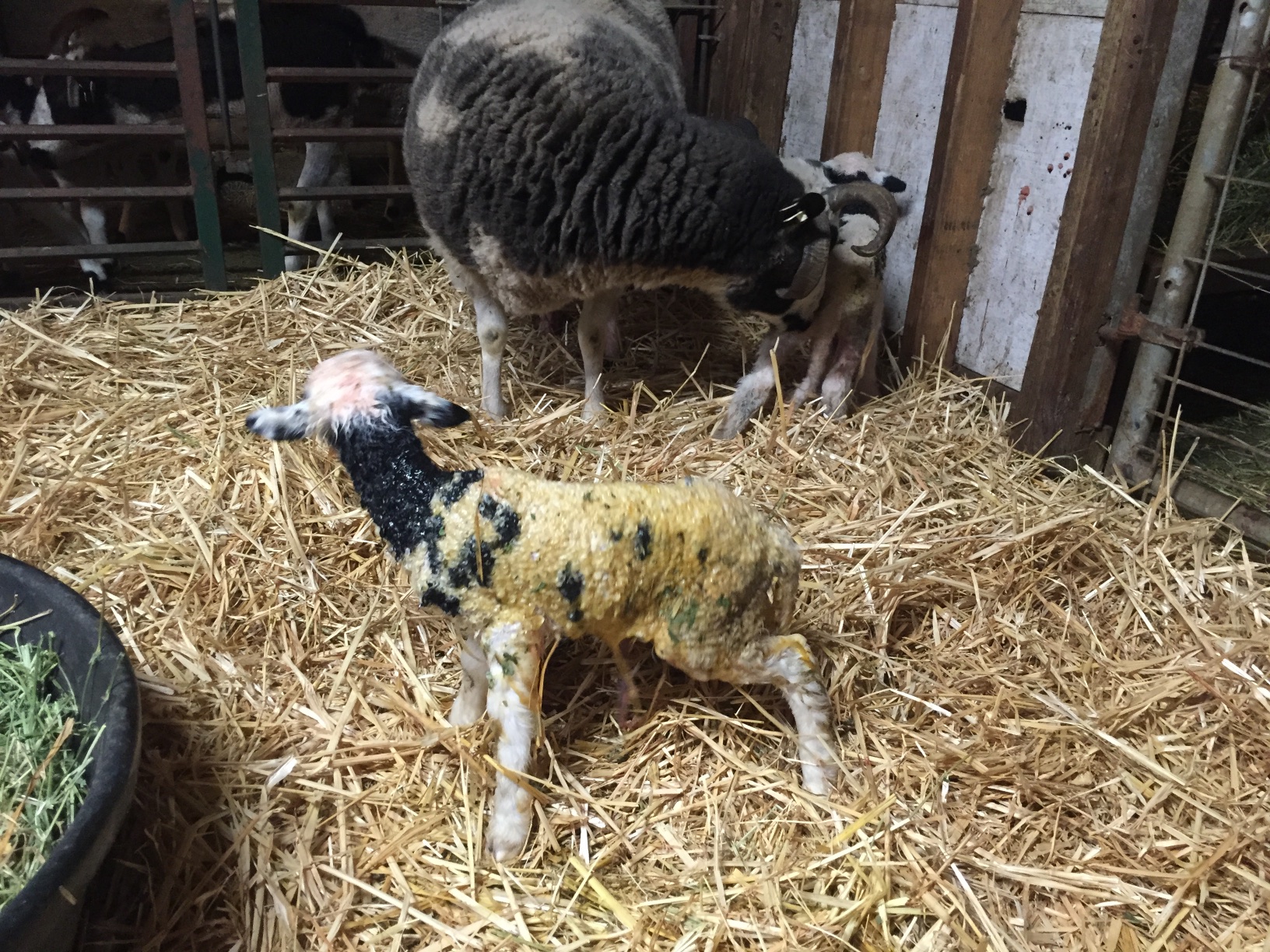 The last lambing of the day was Raquel. After the vet students had left and I had finished working outside I finally went to the house. I went back to the barn to check and these lambs had been born. It wasn't until later at the last check around midnight that I realized that Raquel didn't want one of them. But that is another story.
The last lambing of the day was Raquel. After the vet students had left and I had finished working outside I finally went to the house. I went back to the barn to check and these lambs had been born. It wasn't until later at the last check around midnight that I realized that Raquel didn't want one of them. But that is another story.